Moviestar™ Cleansing Bar: Best Indian Soap for Oily Skin Detox Charcoal Soap

Struggling with oily skin, constant shine, and stubborn breakouts? Achieve a clear, camera-ready complexion with the Moviestar™ Cleansing Bar. We've formulated the best Indian soap for oily skin by combining the deep-detoxifying power of Activated Bamboo Charcoal with a potent AHA + BHA exfoliating formula. This multi-action treatment penetrates deep to dissolve sebum build-up, absorb toxins, and unclog pores, helping to clear breakouts and pimples on the face and body. It is your daily ritual for a perfectly clear, smooth, and radiant glow.
Your daily detox treatment to purify pores, control shine, and reveal a camera-ready glow.
100% Natural Formula • Preservative-Free • Cruelty-Free • Handmade in India
Share
All Benefits
All Benefits
🌟 Benefits of Moviestar™ – Best Indian Soap for Oily Skin
The Moviestar™ Cleansing Bar is a professional-grade detox treatment, formulated to provide a complete solution for oily, congested, and acne-prone skin. It works to deeply purify, gently exfoliate, and restore balance for a clear, smooth, and camera-ready complexion.
1. Deeply Detoxifies & Unclogs Pores
At its core, this is a potent detox charcoal soap. Activated Bamboo Charcoal acts like a natural magnet, binding to toxins, excess oil, bacteria, and deep-set impurities to leave pores impeccably clean and refreshed.
2. Exfoliates to Prevent Acne & Breakouts
This AHA + BHA formula provides multi-level exfoliation. Goat Milk’s natural Lactic Acid (AHA) smooths the skin surface, while oil-soluble BHAs penetrate deep inside pores to dissolve sebum plugs, helping to clear blackheads and prevent new pimples from forming.
3. Balances & Refines the Complexion
As the best Indian soap for oily skin, Moviestar™ does more than cleanse. By balancing the skin’s natural pH and keeping pores clear, it helps them appear smaller and more refined. It also lightens the look of acne scars and blemishes for a smoother, even-toned complexion.
4. Protects the Skin Barrier
Unlike harsh chemical cleansers that strip the skin, this 100% natural formula nourishes while it purifies. It helps defend against environmental pollutants and damage from hard water minerals, leaving the skin barrier calm, balanced, and resilient.
Moviestar™ – the best Indian soap for oily skin – uses Activated Charcoal and an AHA/BHA complex to detoxify pores, prevent breakouts, and fade acne scars, for a clear, camera-ready glow.
Your Ritual & Care
Your Ritual & Care
The Detox Ritual
Unlock the full potential of the best Indian soap for oily skin with this deep-purifying ritual. This treatment is designed to clarify and rebalance your complexion for a flawless, camera-ready finish.
- Activate the Charcoal: Wet the cleansing bar and create a soft, grey lather in your palms. This activates the detoxifying Bamboo Charcoal.
- Massage for Deep Purification: Gently massage the lather onto your damp face and body, focusing on areas prone to oiliness and congestion like the T-zone, back, or chest.
- Rinse to Reveal Clarity: Rinse thoroughly with lukewarm water, washing away toxins, impurities, and excess sebum to reveal skin that feels impeccably clean, smooth, and balanced.
Frequency & Best Practices
⚜️ As a potent detox treatment, we recommend starting with once-daily use, preferably in the evening, to deeply cleanse the skin of the day's impurities. If your skin is very oily, you may increase to twice daily. For those with combination or sensitive skin, alternating with a milder cleanser may be ideal. This is the optimal way to experience the benefits of the best Indian soap for oily skin without over-drying.
Ideal For
- ⚜️ Oily and acne-prone skin types.
- ⚜️ Skin that is congested, with blackheads and clogged pores.
- ⚜️ Individuals seeking a deep detox from makeup, pollution, and impurities.
- ⚜️ Addressing both face and body acne concerns.
- ⚜️ Those looking for the best Indian soap for oily skin that provides a non-stripping, balanced cleanse.
Product Care & Safety
- ⚜️ Store in a cool, dry place away from direct sunlight to preserve the integrity of the natural ingredients.
- ⚜️ For external use only. A patch test on a small area of skin is recommended prior to first usage.
Use Moviestar™ cleansing bar, the best Indian soap for oily skin, once daily to detoxify. Lather, massage onto damp skin, and rinse. Ideal for oily, congested, and acne-prone complexions on the face and body.
Fragrance
Fragrance
An Invigorating, 100% Natural Aquatic Scent
The fragrance of the Moviestar™ Cleansing Bar is a refreshing surprise — clean, uplifting, and entirely natural. Derived from pure Aqua Oil, it creates a crisp counterpoint to the detoxifying power of charcoal, transforming each cleanse into a balanced, luxurious ritual.
The Scent Profile: Clean & Refreshing
This 100% natural aquatic fragrance evokes the ambiance of a tropical island. With fresh, ozonic notes reminiscent of cool sea spray, it leaves skin not only purified but subtly refreshed and impeccably clean. A revitalizing aroma that enhances both the skin and the senses.
Experience a clean, refreshing escape through a 100% natural aquatic fragrance — the perfect finishing touch to the best Indian soap for oily skin.
Ingredient Transparency
Ingredient Transparency
Our Promise of 100% Transparency
At BestIndian™, we believe you have a right to know exactly what you are putting on your skin. We practice absolute transparency, guaranteeing that no other ingredient, apart from those listed below, has been used in this 100% natural and preservative-free formula. Our commitment is to pure, potent, and honest skincare.
Full Ingredient List (INCI)
Cocos Nucifera (Coconut) Oil, Rosa Canina (Rosehip) Seed Oil, Helianthus Annuus (Sunflower) Seed Oil, Butyrospermum Parkii (Shea) Butter, Charcoal Powder (Bamboo), Olea Europaea (Olive) Fruit Oil, Ricinus Communis (Castor) Seed Oil, Goat Milk, Ganga Water (Aqua), Sodium Hydroxide, Natural Fragrance (Aqua Oil).
A Note on Sodium Hydroxide (Lye)
⚜️ Sodium Hydroxide is an essential ingredient required for the ancient, natural process of saponification, which turns oils into soap. No Sodium Hydroxide remains in the final, cured bar of soap. All of our soaps are superfatted, ensuring they are exceptionally gentle and nourishing.
Ingredient Deep Dive
The power of the best Indian soap for oily skin comes from a cast of legendary ingredients working in perfect sync:
⚜️ Activated Bamboo Charcoal: The Master Detoxifier
The star of this formula, our activated bamboo charcoal acts like a powerful magnet. It uses the scientific principle of adsorption to draw out and bind to toxins, excess oil, bacteria, and deep-set impurities, leaving pores impeccably clean and helping to reduce their appearance.
⚜️ Goat Milk (AHA & BHA Source): The Gentle Exfoliator
The nourishing Goat Milk base is naturally rich in Lactic Acid, a gentle Alpha-Hydroxy Acid (AHA), which works to dissolve the bonds holding dull, dead cells on the surface. The formula is boosted with oil-soluble Beta-Hydroxy Acids (BHAs) that penetrate deep inside the pores to clear out hardened sebum plugs and blackheads.
⚜️ Rosehip Oil (Rosa Canina): The Scar Reducer
This luxurious, non-comedogenic oil is celebrated for its high content of vitamins and essential fatty acids. It is known to support skin regeneration, which can help to lighten the appearance of post-acne marks and scars, promoting a more even and uniform skin tone.
⚜️ Shea Butter (Butyrospermum Parkii): The Balancing Moisturizer
To ensure our deep-cleansing formula never strips the skin, we include pure Shea Butter. It provides essential moisture and nourishment, helping to keep the skin's barrier healthy and balanced, resulting in a clean yet comfortable feel.
Formulated Without
Preservatives, Parabens, Sulfates, Phthalates, Silicones, and Synthetic Chemicals.
A 100% natural, transparent formula, the best Indian soap for oily skin features Activated Charcoal to detoxify pores, Goat Milk's AHA/BHAs to exfoliate, and Rosehip Oil to help lighten the appearance of acne scars.
Frequently Asked Questions
Frequently Asked Questions
❓ Moviestar™ FAQs
1. What is the best Indian soap for oily skin and pimples?
⚜️ The Moviestar™ Cleansing Bar is formulated as the best Indian soap for oily skin. Activated Charcoal detoxifies deep within the pores, while an AHA/BHA complex exfoliates the surface. Together, they help regulate sebum, clear pimples, and refine skin texture for a clear, camera-ready glow.
2. Is Moviestar™ safe for daily use?
⚜️ Yes. Moviestar™ is gentle enough for daily cleansing on both face and body. Its natural base ensures it purifies without stripping moisture, making it suitable for acne-prone and oily skin. For sensitive skin, patch testing is recommended before consistent daily use.
3. How often should I use this detox soap?
⚜️ We recommend starting with once daily, ideally in the evening. As your skin adjusts, you can increase to twice daily. Consistency matters more than overuse, as the formula is potent but balanced to maintain skin health without irritation.
4. Will this soap dry out my skin?
⚜️ No. Unlike harsh acne cleansers, Moviestar™ combines Activated Charcoal with Goat Milk and Shea Butter. This ensures it balances the skin’s natural pH and hydration, leaving skin feeling clean, refreshed, and nourished — never tight or over-dry.
5. How does Activated Charcoal cleanse oily skin?
⚜️ Activated Charcoal has a vast, porous surface that works like a magnet, binding to oil, bacteria, and toxins trapped in pores. This detoxifying action clears deep congestion, helping to prevent breakouts and leaving skin fresh, purified, and balanced.
6. Can AHA and BHA really help with acne and blackheads?
⚜️ Yes. Goat Milk’s natural AHAs exfoliate surface cells, while oil-soluble BHAs go deeper into pores to dissolve hardened sebum and keratin plugs. This dual action clears blackheads, prevents new clogs, and smooths uneven skin texture over time.
7. Will Moviestar™ help fade acne scars?
⚜️ Over consistent use, the exfoliating power of AHAs helps lighten acne marks and improve uneven texture. By accelerating cell turnover, the soap supports a clearer, more refined complexion, reducing the visibility of scars and blemishes.
8. Is this soap suitable for sensitive skin?
⚜️ Moviestar™ is 100% natural, but since it contains exfoliating acids, those with very sensitive skin should patch test first. If tolerated, it can be used every other day before progressing to daily use for the best balance of results and comfort.
9. Can both men and women use this soap?
⚜️ Absolutely. Moviestar™ is a unisex charcoal soap, designed for anyone dealing with oily or acne-prone skin. Whether used as a daily face wash or a body cleanser, it effectively addresses concerns like pimples, blackheads, and clogged pores.
10. Does this soap help reduce large pores?
⚜️ Yes. Pores often appear larger when congested. By detoxifying and keeping them clear of debris, Moviestar™ helps refine their appearance, making skin look smoother, tighter, and more balanced over time.
11. Can I use Moviestar™ on body acne?
⚜️ Yes. This cleansing bar works for both face and body. It is particularly effective against back acne and chest acne, as it penetrates deeply to unclog pores, regulate oil, and clear blemishes across larger areas of skin.
12. Is Moviestar™ vegan and cruelty-free?
⚜️ Moviestar™ is made with Goat Milk, so it is vegetarian but not vegan. However, like all BestIndian™ products, it is always cruelty-free, ethically made, and crafted with 100% natural ingredients.
Moviestar™ – the best Indian soap for oily skin – combines Activated Charcoal, AHA, BHA, and Goat Milk to detoxify pores, fight acne and blackheads, fade scars, and balance excess oil. Suitable for men, women, face, and body — it’s a natural, luxury solution for clearer skin.
The Science of Our Formula
The Science of Our Formula
The Science of Deep Purification
Oily and acne-prone skin requires a sophisticated, dual-action approach that addresses impurities both deep within the pores and on the skin's surface. The science behind the Moviestar™ Cleansing Bar lies in combining two powerful mechanisms: deep-pore adsorption and multi-level exfoliation.
⚜️ The Challenge: Deep Pore Congestion
Pores can become clogged with a mixture of excess sebum (oil), dead skin cells, bacteria, and environmental pollutants. This congestion leads to the formation of blackheads, pimples, and an overall dull, uneven appearance.
⚜️ The Scientific Solution: Activated Charcoal Adsorption
Our formula uses high-grade Activated Bamboo Charcoal, which has a vast, porous microscopic structure. Through a chemical process called adsorption, this charcoal acts like a powerful magnet, binding to and drawing out toxins, excess oil, and impurities from deep within the pores, leaving the skin impeccably clean.
⚜️ The Challenge: Surface Buildup & Breakouts
On oily skin, dead cells don't shed efficiently. They can build up on the surface, trapping oil and bacteria, which leads to breakouts. This is a key issue that the best Indian soap for oily skin must address.
⚜️ The Scientific Solution: Dual-Acid Exfoliation (AHA + BHA)
Our soap provides multi-level exfoliation without harsh scrubbing. First, water-soluble Alpha-Hydroxy Acids (AHAs), like the natural Lactic Acid from our Goat Milk base, work on the skin's surface to dissolve the bonds holding dull, dead cells together. Second, oil-soluble Beta-Hydroxy Acids (BHAs) penetrate deep inside the pores to dissolve hardened sebum and keratin plugs, helping to clear existing breakouts and prevent new ones from forming.
The science behind the best Indian soap for oily skin involves a dual-action approach: Activated Charcoal uses adsorption to detoxify deep pores, while an AHA/BHA formula exfoliates the surface and clears sebum plugs to prevent breakouts.


Moviestar™ Cleansing Bar: Best Indian Soap for Oily Skin Detox Charcoal Soap
Share
All Benefits
All Benefits
🌟 Benefits of Moviestar™ – Best Indian Soap for Oily Skin
The Moviestar™ Cleansing Bar is a professional-grade detox treatment, formulated to provide a complete solution for oily, congested, and acne-prone skin. It works to deeply purify, gently exfoliate, and restore balance for a clear, smooth, and camera-ready complexion.
1. Deeply Detoxifies & Unclogs Pores
At its core, this is a potent detox charcoal soap. Activated Bamboo Charcoal acts like a natural magnet, binding to toxins, excess oil, bacteria, and deep-set impurities to leave pores impeccably clean and refreshed.
2. Exfoliates to Prevent Acne & Breakouts
This AHA + BHA formula provides multi-level exfoliation. Goat Milk’s natural Lactic Acid (AHA) smooths the skin surface, while oil-soluble BHAs penetrate deep inside pores to dissolve sebum plugs, helping to clear blackheads and prevent new pimples from forming.
3. Balances & Refines the Complexion
As the best Indian soap for oily skin, Moviestar™ does more than cleanse. By balancing the skin’s natural pH and keeping pores clear, it helps them appear smaller and more refined. It also lightens the look of acne scars and blemishes for a smoother, even-toned complexion.
4. Protects the Skin Barrier
Unlike harsh chemical cleansers that strip the skin, this 100% natural formula nourishes while it purifies. It helps defend against environmental pollutants and damage from hard water minerals, leaving the skin barrier calm, balanced, and resilient.
Moviestar™ – the best Indian soap for oily skin – uses Activated Charcoal and an AHA/BHA complex to detoxify pores, prevent breakouts, and fade acne scars, for a clear, camera-ready glow.
Your Ritual & Care
Your Ritual & Care
The Detox Ritual
Unlock the full potential of the best Indian soap for oily skin with this deep-purifying ritual. This treatment is designed to clarify and rebalance your complexion for a flawless, camera-ready finish.
- Activate the Charcoal: Wet the cleansing bar and create a soft, grey lather in your palms. This activates the detoxifying Bamboo Charcoal.
- Massage for Deep Purification: Gently massage the lather onto your damp face and body, focusing on areas prone to oiliness and congestion like the T-zone, back, or chest.
- Rinse to Reveal Clarity: Rinse thoroughly with lukewarm water, washing away toxins, impurities, and excess sebum to reveal skin that feels impeccably clean, smooth, and balanced.
Frequency & Best Practices
⚜️ As a potent detox treatment, we recommend starting with once-daily use, preferably in the evening, to deeply cleanse the skin of the day's impurities. If your skin is very oily, you may increase to twice daily. For those with combination or sensitive skin, alternating with a milder cleanser may be ideal. This is the optimal way to experience the benefits of the best Indian soap for oily skin without over-drying.
Ideal For
- ⚜️ Oily and acne-prone skin types.
- ⚜️ Skin that is congested, with blackheads and clogged pores.
- ⚜️ Individuals seeking a deep detox from makeup, pollution, and impurities.
- ⚜️ Addressing both face and body acne concerns.
- ⚜️ Those looking for the best Indian soap for oily skin that provides a non-stripping, balanced cleanse.
Product Care & Safety
- ⚜️ Store in a cool, dry place away from direct sunlight to preserve the integrity of the natural ingredients.
- ⚜️ For external use only. A patch test on a small area of skin is recommended prior to first usage.
Use Moviestar™ cleansing bar, the best Indian soap for oily skin, once daily to detoxify. Lather, massage onto damp skin, and rinse. Ideal for oily, congested, and acne-prone complexions on the face and body.
Fragrance
Fragrance
An Invigorating, 100% Natural Aquatic Scent
The fragrance of the Moviestar™ Cleansing Bar is a refreshing surprise — clean, uplifting, and entirely natural. Derived from pure Aqua Oil, it creates a crisp counterpoint to the detoxifying power of charcoal, transforming each cleanse into a balanced, luxurious ritual.
The Scent Profile: Clean & Refreshing
This 100% natural aquatic fragrance evokes the ambiance of a tropical island. With fresh, ozonic notes reminiscent of cool sea spray, it leaves skin not only purified but subtly refreshed and impeccably clean. A revitalizing aroma that enhances both the skin and the senses.
Experience a clean, refreshing escape through a 100% natural aquatic fragrance — the perfect finishing touch to the best Indian soap for oily skin.
Ingredient Transparency
Ingredient Transparency
Our Promise of 100% Transparency
At BestIndian™, we believe you have a right to know exactly what you are putting on your skin. We practice absolute transparency, guaranteeing that no other ingredient, apart from those listed below, has been used in this 100% natural and preservative-free formula. Our commitment is to pure, potent, and honest skincare.
Full Ingredient List (INCI)
Cocos Nucifera (Coconut) Oil, Rosa Canina (Rosehip) Seed Oil, Helianthus Annuus (Sunflower) Seed Oil, Butyrospermum Parkii (Shea) Butter, Charcoal Powder (Bamboo), Olea Europaea (Olive) Fruit Oil, Ricinus Communis (Castor) Seed Oil, Goat Milk, Ganga Water (Aqua), Sodium Hydroxide, Natural Fragrance (Aqua Oil).
A Note on Sodium Hydroxide (Lye)
⚜️ Sodium Hydroxide is an essential ingredient required for the ancient, natural process of saponification, which turns oils into soap. No Sodium Hydroxide remains in the final, cured bar of soap. All of our soaps are superfatted, ensuring they are exceptionally gentle and nourishing.
Ingredient Deep Dive
The power of the best Indian soap for oily skin comes from a cast of legendary ingredients working in perfect sync:
⚜️ Activated Bamboo Charcoal: The Master Detoxifier
The star of this formula, our activated bamboo charcoal acts like a powerful magnet. It uses the scientific principle of adsorption to draw out and bind to toxins, excess oil, bacteria, and deep-set impurities, leaving pores impeccably clean and helping to reduce their appearance.
⚜️ Goat Milk (AHA & BHA Source): The Gentle Exfoliator
The nourishing Goat Milk base is naturally rich in Lactic Acid, a gentle Alpha-Hydroxy Acid (AHA), which works to dissolve the bonds holding dull, dead cells on the surface. The formula is boosted with oil-soluble Beta-Hydroxy Acids (BHAs) that penetrate deep inside the pores to clear out hardened sebum plugs and blackheads.
⚜️ Rosehip Oil (Rosa Canina): The Scar Reducer
This luxurious, non-comedogenic oil is celebrated for its high content of vitamins and essential fatty acids. It is known to support skin regeneration, which can help to lighten the appearance of post-acne marks and scars, promoting a more even and uniform skin tone.
⚜️ Shea Butter (Butyrospermum Parkii): The Balancing Moisturizer
To ensure our deep-cleansing formula never strips the skin, we include pure Shea Butter. It provides essential moisture and nourishment, helping to keep the skin's barrier healthy and balanced, resulting in a clean yet comfortable feel.
Formulated Without
Preservatives, Parabens, Sulfates, Phthalates, Silicones, and Synthetic Chemicals.
A 100% natural, transparent formula, the best Indian soap for oily skin features Activated Charcoal to detoxify pores, Goat Milk's AHA/BHAs to exfoliate, and Rosehip Oil to help lighten the appearance of acne scars.
Frequently Asked Questions
Frequently Asked Questions
❓ Moviestar™ FAQs
1. What is the best Indian soap for oily skin and pimples?
⚜️ The Moviestar™ Cleansing Bar is formulated as the best Indian soap for oily skin. Activated Charcoal detoxifies deep within the pores, while an AHA/BHA complex exfoliates the surface. Together, they help regulate sebum, clear pimples, and refine skin texture for a clear, camera-ready glow.
2. Is Moviestar™ safe for daily use?
⚜️ Yes. Moviestar™ is gentle enough for daily cleansing on both face and body. Its natural base ensures it purifies without stripping moisture, making it suitable for acne-prone and oily skin. For sensitive skin, patch testing is recommended before consistent daily use.
3. How often should I use this detox soap?
⚜️ We recommend starting with once daily, ideally in the evening. As your skin adjusts, you can increase to twice daily. Consistency matters more than overuse, as the formula is potent but balanced to maintain skin health without irritation.
4. Will this soap dry out my skin?
⚜️ No. Unlike harsh acne cleansers, Moviestar™ combines Activated Charcoal with Goat Milk and Shea Butter. This ensures it balances the skin’s natural pH and hydration, leaving skin feeling clean, refreshed, and nourished — never tight or over-dry.
5. How does Activated Charcoal cleanse oily skin?
⚜️ Activated Charcoal has a vast, porous surface that works like a magnet, binding to oil, bacteria, and toxins trapped in pores. This detoxifying action clears deep congestion, helping to prevent breakouts and leaving skin fresh, purified, and balanced.
6. Can AHA and BHA really help with acne and blackheads?
⚜️ Yes. Goat Milk’s natural AHAs exfoliate surface cells, while oil-soluble BHAs go deeper into pores to dissolve hardened sebum and keratin plugs. This dual action clears blackheads, prevents new clogs, and smooths uneven skin texture over time.
7. Will Moviestar™ help fade acne scars?
⚜️ Over consistent use, the exfoliating power of AHAs helps lighten acne marks and improve uneven texture. By accelerating cell turnover, the soap supports a clearer, more refined complexion, reducing the visibility of scars and blemishes.
8. Is this soap suitable for sensitive skin?
⚜️ Moviestar™ is 100% natural, but since it contains exfoliating acids, those with very sensitive skin should patch test first. If tolerated, it can be used every other day before progressing to daily use for the best balance of results and comfort.
9. Can both men and women use this soap?
⚜️ Absolutely. Moviestar™ is a unisex charcoal soap, designed for anyone dealing with oily or acne-prone skin. Whether used as a daily face wash or a body cleanser, it effectively addresses concerns like pimples, blackheads, and clogged pores.
10. Does this soap help reduce large pores?
⚜️ Yes. Pores often appear larger when congested. By detoxifying and keeping them clear of debris, Moviestar™ helps refine their appearance, making skin look smoother, tighter, and more balanced over time.
11. Can I use Moviestar™ on body acne?
⚜️ Yes. This cleansing bar works for both face and body. It is particularly effective against back acne and chest acne, as it penetrates deeply to unclog pores, regulate oil, and clear blemishes across larger areas of skin.
12. Is Moviestar™ vegan and cruelty-free?
⚜️ Moviestar™ is made with Goat Milk, so it is vegetarian but not vegan. However, like all BestIndian™ products, it is always cruelty-free, ethically made, and crafted with 100% natural ingredients.
Moviestar™ – the best Indian soap for oily skin – combines Activated Charcoal, AHA, BHA, and Goat Milk to detoxify pores, fight acne and blackheads, fade scars, and balance excess oil. Suitable for men, women, face, and body — it’s a natural, luxury solution for clearer skin.
The Science of Our Formula
The Science of Our Formula
The Science of Deep Purification
Oily and acne-prone skin requires a sophisticated, dual-action approach that addresses impurities both deep within the pores and on the skin's surface. The science behind the Moviestar™ Cleansing Bar lies in combining two powerful mechanisms: deep-pore adsorption and multi-level exfoliation.
⚜️ The Challenge: Deep Pore Congestion
Pores can become clogged with a mixture of excess sebum (oil), dead skin cells, bacteria, and environmental pollutants. This congestion leads to the formation of blackheads, pimples, and an overall dull, uneven appearance.
⚜️ The Scientific Solution: Activated Charcoal Adsorption
Our formula uses high-grade Activated Bamboo Charcoal, which has a vast, porous microscopic structure. Through a chemical process called adsorption, this charcoal acts like a powerful magnet, binding to and drawing out toxins, excess oil, and impurities from deep within the pores, leaving the skin impeccably clean.
⚜️ The Challenge: Surface Buildup & Breakouts
On oily skin, dead cells don't shed efficiently. They can build up on the surface, trapping oil and bacteria, which leads to breakouts. This is a key issue that the best Indian soap for oily skin must address.
⚜️ The Scientific Solution: Dual-Acid Exfoliation (AHA + BHA)
Our soap provides multi-level exfoliation without harsh scrubbing. First, water-soluble Alpha-Hydroxy Acids (AHAs), like the natural Lactic Acid from our Goat Milk base, work on the skin's surface to dissolve the bonds holding dull, dead cells together. Second, oil-soluble Beta-Hydroxy Acids (BHAs) penetrate deep inside the pores to dissolve hardened sebum and keratin plugs, helping to clear existing breakouts and prevent new ones from forming.
The science behind the best Indian soap for oily skin involves a dual-action approach: Activated Charcoal uses adsorption to detoxify deep pores, while an AHA/BHA formula exfoliates the surface and clears sebum plugs to prevent breakouts.

Moviestar™ Cleansing Bar: Best Indian Soap for Oily Skin Detox Charcoal Soap
Share
All Benefits
All Benefits
🌟 Benefits of Moviestar™ – Best Indian Soap for Oily Skin
The Moviestar™ Cleansing Bar is a professional-grade detox treatment, formulated to provide a complete solution for oily, congested, and acne-prone skin. It works to deeply purify, gently exfoliate, and restore balance for a clear, smooth, and camera-ready complexion.
1. Deeply Detoxifies & Unclogs Pores
At its core, this is a potent detox charcoal soap. Activated Bamboo Charcoal acts like a natural magnet, binding to toxins, excess oil, bacteria, and deep-set impurities to leave pores impeccably clean and refreshed.
2. Exfoliates to Prevent Acne & Breakouts
This AHA + BHA formula provides multi-level exfoliation. Goat Milk’s natural Lactic Acid (AHA) smooths the skin surface, while oil-soluble BHAs penetrate deep inside pores to dissolve sebum plugs, helping to clear blackheads and prevent new pimples from forming.
3. Balances & Refines the Complexion
As the best Indian soap for oily skin, Moviestar™ does more than cleanse. By balancing the skin’s natural pH and keeping pores clear, it helps them appear smaller and more refined. It also lightens the look of acne scars and blemishes for a smoother, even-toned complexion.
4. Protects the Skin Barrier
Unlike harsh chemical cleansers that strip the skin, this 100% natural formula nourishes while it purifies. It helps defend against environmental pollutants and damage from hard water minerals, leaving the skin barrier calm, balanced, and resilient.
Moviestar™ – the best Indian soap for oily skin – uses Activated Charcoal and an AHA/BHA complex to detoxify pores, prevent breakouts, and fade acne scars, for a clear, camera-ready glow.
Your Ritual & Care
Your Ritual & Care
The Detox Ritual
Unlock the full potential of the best Indian soap for oily skin with this deep-purifying ritual. This treatment is designed to clarify and rebalance your complexion for a flawless, camera-ready finish.
- Activate the Charcoal: Wet the cleansing bar and create a soft, grey lather in your palms. This activates the detoxifying Bamboo Charcoal.
- Massage for Deep Purification: Gently massage the lather onto your damp face and body, focusing on areas prone to oiliness and congestion like the T-zone, back, or chest.
- Rinse to Reveal Clarity: Rinse thoroughly with lukewarm water, washing away toxins, impurities, and excess sebum to reveal skin that feels impeccably clean, smooth, and balanced.
Frequency & Best Practices
⚜️ As a potent detox treatment, we recommend starting with once-daily use, preferably in the evening, to deeply cleanse the skin of the day's impurities. If your skin is very oily, you may increase to twice daily. For those with combination or sensitive skin, alternating with a milder cleanser may be ideal. This is the optimal way to experience the benefits of the best Indian soap for oily skin without over-drying.
Ideal For
- ⚜️ Oily and acne-prone skin types.
- ⚜️ Skin that is congested, with blackheads and clogged pores.
- ⚜️ Individuals seeking a deep detox from makeup, pollution, and impurities.
- ⚜️ Addressing both face and body acne concerns.
- ⚜️ Those looking for the best Indian soap for oily skin that provides a non-stripping, balanced cleanse.
Product Care & Safety
- ⚜️ Store in a cool, dry place away from direct sunlight to preserve the integrity of the natural ingredients.
- ⚜️ For external use only. A patch test on a small area of skin is recommended prior to first usage.
Use Moviestar™ cleansing bar, the best Indian soap for oily skin, once daily to detoxify. Lather, massage onto damp skin, and rinse. Ideal for oily, congested, and acne-prone complexions on the face and body.
Fragrance
Fragrance
An Invigorating, 100% Natural Aquatic Scent
The fragrance of the Moviestar™ Cleansing Bar is a refreshing surprise — clean, uplifting, and entirely natural. Derived from pure Aqua Oil, it creates a crisp counterpoint to the detoxifying power of charcoal, transforming each cleanse into a balanced, luxurious ritual.
The Scent Profile: Clean & Refreshing
This 100% natural aquatic fragrance evokes the ambiance of a tropical island. With fresh, ozonic notes reminiscent of cool sea spray, it leaves skin not only purified but subtly refreshed and impeccably clean. A revitalizing aroma that enhances both the skin and the senses.
Experience a clean, refreshing escape through a 100% natural aquatic fragrance — the perfect finishing touch to the best Indian soap for oily skin.
Ingredient Transparency
Ingredient Transparency
Our Promise of 100% Transparency
At BestIndian™, we believe you have a right to know exactly what you are putting on your skin. We practice absolute transparency, guaranteeing that no other ingredient, apart from those listed below, has been used in this 100% natural and preservative-free formula. Our commitment is to pure, potent, and honest skincare.
Full Ingredient List (INCI)
Cocos Nucifera (Coconut) Oil, Rosa Canina (Rosehip) Seed Oil, Helianthus Annuus (Sunflower) Seed Oil, Butyrospermum Parkii (Shea) Butter, Charcoal Powder (Bamboo), Olea Europaea (Olive) Fruit Oil, Ricinus Communis (Castor) Seed Oil, Goat Milk, Ganga Water (Aqua), Sodium Hydroxide, Natural Fragrance (Aqua Oil).
A Note on Sodium Hydroxide (Lye)
⚜️ Sodium Hydroxide is an essential ingredient required for the ancient, natural process of saponification, which turns oils into soap. No Sodium Hydroxide remains in the final, cured bar of soap. All of our soaps are superfatted, ensuring they are exceptionally gentle and nourishing.
Ingredient Deep Dive
The power of the best Indian soap for oily skin comes from a cast of legendary ingredients working in perfect sync:
⚜️ Activated Bamboo Charcoal: The Master Detoxifier
The star of this formula, our activated bamboo charcoal acts like a powerful magnet. It uses the scientific principle of adsorption to draw out and bind to toxins, excess oil, bacteria, and deep-set impurities, leaving pores impeccably clean and helping to reduce their appearance.
⚜️ Goat Milk (AHA & BHA Source): The Gentle Exfoliator
The nourishing Goat Milk base is naturally rich in Lactic Acid, a gentle Alpha-Hydroxy Acid (AHA), which works to dissolve the bonds holding dull, dead cells on the surface. The formula is boosted with oil-soluble Beta-Hydroxy Acids (BHAs) that penetrate deep inside the pores to clear out hardened sebum plugs and blackheads.
⚜️ Rosehip Oil (Rosa Canina): The Scar Reducer
This luxurious, non-comedogenic oil is celebrated for its high content of vitamins and essential fatty acids. It is known to support skin regeneration, which can help to lighten the appearance of post-acne marks and scars, promoting a more even and uniform skin tone.
⚜️ Shea Butter (Butyrospermum Parkii): The Balancing Moisturizer
To ensure our deep-cleansing formula never strips the skin, we include pure Shea Butter. It provides essential moisture and nourishment, helping to keep the skin's barrier healthy and balanced, resulting in a clean yet comfortable feel.
Formulated Without
Preservatives, Parabens, Sulfates, Phthalates, Silicones, and Synthetic Chemicals.
A 100% natural, transparent formula, the best Indian soap for oily skin features Activated Charcoal to detoxify pores, Goat Milk's AHA/BHAs to exfoliate, and Rosehip Oil to help lighten the appearance of acne scars.
Frequently Asked Questions
Frequently Asked Questions
❓ Moviestar™ FAQs
1. What is the best Indian soap for oily skin and pimples?
⚜️ The Moviestar™ Cleansing Bar is formulated as the best Indian soap for oily skin. Activated Charcoal detoxifies deep within the pores, while an AHA/BHA complex exfoliates the surface. Together, they help regulate sebum, clear pimples, and refine skin texture for a clear, camera-ready glow.
2. Is Moviestar™ safe for daily use?
⚜️ Yes. Moviestar™ is gentle enough for daily cleansing on both face and body. Its natural base ensures it purifies without stripping moisture, making it suitable for acne-prone and oily skin. For sensitive skin, patch testing is recommended before consistent daily use.
3. How often should I use this detox soap?
⚜️ We recommend starting with once daily, ideally in the evening. As your skin adjusts, you can increase to twice daily. Consistency matters more than overuse, as the formula is potent but balanced to maintain skin health without irritation.
4. Will this soap dry out my skin?
⚜️ No. Unlike harsh acne cleansers, Moviestar™ combines Activated Charcoal with Goat Milk and Shea Butter. This ensures it balances the skin’s natural pH and hydration, leaving skin feeling clean, refreshed, and nourished — never tight or over-dry.
5. How does Activated Charcoal cleanse oily skin?
⚜️ Activated Charcoal has a vast, porous surface that works like a magnet, binding to oil, bacteria, and toxins trapped in pores. This detoxifying action clears deep congestion, helping to prevent breakouts and leaving skin fresh, purified, and balanced.
6. Can AHA and BHA really help with acne and blackheads?
⚜️ Yes. Goat Milk’s natural AHAs exfoliate surface cells, while oil-soluble BHAs go deeper into pores to dissolve hardened sebum and keratin plugs. This dual action clears blackheads, prevents new clogs, and smooths uneven skin texture over time.
7. Will Moviestar™ help fade acne scars?
⚜️ Over consistent use, the exfoliating power of AHAs helps lighten acne marks and improve uneven texture. By accelerating cell turnover, the soap supports a clearer, more refined complexion, reducing the visibility of scars and blemishes.
8. Is this soap suitable for sensitive skin?
⚜️ Moviestar™ is 100% natural, but since it contains exfoliating acids, those with very sensitive skin should patch test first. If tolerated, it can be used every other day before progressing to daily use for the best balance of results and comfort.
9. Can both men and women use this soap?
⚜️ Absolutely. Moviestar™ is a unisex charcoal soap, designed for anyone dealing with oily or acne-prone skin. Whether used as a daily face wash or a body cleanser, it effectively addresses concerns like pimples, blackheads, and clogged pores.
10. Does this soap help reduce large pores?
⚜️ Yes. Pores often appear larger when congested. By detoxifying and keeping them clear of debris, Moviestar™ helps refine their appearance, making skin look smoother, tighter, and more balanced over time.
11. Can I use Moviestar™ on body acne?
⚜️ Yes. This cleansing bar works for both face and body. It is particularly effective against back acne and chest acne, as it penetrates deeply to unclog pores, regulate oil, and clear blemishes across larger areas of skin.
12. Is Moviestar™ vegan and cruelty-free?
⚜️ Moviestar™ is made with Goat Milk, so it is vegetarian but not vegan. However, like all BestIndian™ products, it is always cruelty-free, ethically made, and crafted with 100% natural ingredients.
Moviestar™ – the best Indian soap for oily skin – combines Activated Charcoal, AHA, BHA, and Goat Milk to detoxify pores, fight acne and blackheads, fade scars, and balance excess oil. Suitable for men, women, face, and body — it’s a natural, luxury solution for clearer skin.
The Science of Our Formula
The Science of Our Formula
The Science of Deep Purification
Oily and acne-prone skin requires a sophisticated, dual-action approach that addresses impurities both deep within the pores and on the skin's surface. The science behind the Moviestar™ Cleansing Bar lies in combining two powerful mechanisms: deep-pore adsorption and multi-level exfoliation.
⚜️ The Challenge: Deep Pore Congestion
Pores can become clogged with a mixture of excess sebum (oil), dead skin cells, bacteria, and environmental pollutants. This congestion leads to the formation of blackheads, pimples, and an overall dull, uneven appearance.
⚜️ The Scientific Solution: Activated Charcoal Adsorption
Our formula uses high-grade Activated Bamboo Charcoal, which has a vast, porous microscopic structure. Through a chemical process called adsorption, this charcoal acts like a powerful magnet, binding to and drawing out toxins, excess oil, and impurities from deep within the pores, leaving the skin impeccably clean.
⚜️ The Challenge: Surface Buildup & Breakouts
On oily skin, dead cells don't shed efficiently. They can build up on the surface, trapping oil and bacteria, which leads to breakouts. This is a key issue that the best Indian soap for oily skin must address.
⚜️ The Scientific Solution: Dual-Acid Exfoliation (AHA + BHA)
Our soap provides multi-level exfoliation without harsh scrubbing. First, water-soluble Alpha-Hydroxy Acids (AHAs), like the natural Lactic Acid from our Goat Milk base, work on the skin's surface to dissolve the bonds holding dull, dead cells together. Second, oil-soluble Beta-Hydroxy Acids (BHAs) penetrate deep inside the pores to dissolve hardened sebum and keratin plugs, helping to clear existing breakouts and prevent new ones from forming.
The science behind the best Indian soap for oily skin involves a dual-action approach: Activated Charcoal uses adsorption to detoxify deep pores, while an AHA/BHA formula exfoliates the surface and clears sebum plugs to prevent breakouts.

Moviestar™ Cleansing Bar: Best Indian Soap for Oily Skin Detox Charcoal Soap
Share
All Benefits
All Benefits
🌟 Benefits of Moviestar™ – Best Indian Soap for Oily Skin
The Moviestar™ Cleansing Bar is a professional-grade detox treatment, formulated to provide a complete solution for oily, congested, and acne-prone skin. It works to deeply purify, gently exfoliate, and restore balance for a clear, smooth, and camera-ready complexion.
1. Deeply Detoxifies & Unclogs Pores
At its core, this is a potent detox charcoal soap. Activated Bamboo Charcoal acts like a natural magnet, binding to toxins, excess oil, bacteria, and deep-set impurities to leave pores impeccably clean and refreshed.
2. Exfoliates to Prevent Acne & Breakouts
This AHA + BHA formula provides multi-level exfoliation. Goat Milk’s natural Lactic Acid (AHA) smooths the skin surface, while oil-soluble BHAs penetrate deep inside pores to dissolve sebum plugs, helping to clear blackheads and prevent new pimples from forming.
3. Balances & Refines the Complexion
As the best Indian soap for oily skin, Moviestar™ does more than cleanse. By balancing the skin’s natural pH and keeping pores clear, it helps them appear smaller and more refined. It also lightens the look of acne scars and blemishes for a smoother, even-toned complexion.
4. Protects the Skin Barrier
Unlike harsh chemical cleansers that strip the skin, this 100% natural formula nourishes while it purifies. It helps defend against environmental pollutants and damage from hard water minerals, leaving the skin barrier calm, balanced, and resilient.
Moviestar™ – the best Indian soap for oily skin – uses Activated Charcoal and an AHA/BHA complex to detoxify pores, prevent breakouts, and fade acne scars, for a clear, camera-ready glow.
Your Ritual & Care
Your Ritual & Care
The Detox Ritual
Unlock the full potential of the best Indian soap for oily skin with this deep-purifying ritual. This treatment is designed to clarify and rebalance your complexion for a flawless, camera-ready finish.
- Activate the Charcoal: Wet the cleansing bar and create a soft, grey lather in your palms. This activates the detoxifying Bamboo Charcoal.
- Massage for Deep Purification: Gently massage the lather onto your damp face and body, focusing on areas prone to oiliness and congestion like the T-zone, back, or chest.
- Rinse to Reveal Clarity: Rinse thoroughly with lukewarm water, washing away toxins, impurities, and excess sebum to reveal skin that feels impeccably clean, smooth, and balanced.
Frequency & Best Practices
⚜️ As a potent detox treatment, we recommend starting with once-daily use, preferably in the evening, to deeply cleanse the skin of the day's impurities. If your skin is very oily, you may increase to twice daily. For those with combination or sensitive skin, alternating with a milder cleanser may be ideal. This is the optimal way to experience the benefits of the best Indian soap for oily skin without over-drying.
Ideal For
- ⚜️ Oily and acne-prone skin types.
- ⚜️ Skin that is congested, with blackheads and clogged pores.
- ⚜️ Individuals seeking a deep detox from makeup, pollution, and impurities.
- ⚜️ Addressing both face and body acne concerns.
- ⚜️ Those looking for the best Indian soap for oily skin that provides a non-stripping, balanced cleanse.
Product Care & Safety
- ⚜️ Store in a cool, dry place away from direct sunlight to preserve the integrity of the natural ingredients.
- ⚜️ For external use only. A patch test on a small area of skin is recommended prior to first usage.
Use Moviestar™ cleansing bar, the best Indian soap for oily skin, once daily to detoxify. Lather, massage onto damp skin, and rinse. Ideal for oily, congested, and acne-prone complexions on the face and body.
Fragrance
Fragrance
An Invigorating, 100% Natural Aquatic Scent
The fragrance of the Moviestar™ Cleansing Bar is a refreshing surprise — clean, uplifting, and entirely natural. Derived from pure Aqua Oil, it creates a crisp counterpoint to the detoxifying power of charcoal, transforming each cleanse into a balanced, luxurious ritual.
The Scent Profile: Clean & Refreshing
This 100% natural aquatic fragrance evokes the ambiance of a tropical island. With fresh, ozonic notes reminiscent of cool sea spray, it leaves skin not only purified but subtly refreshed and impeccably clean. A revitalizing aroma that enhances both the skin and the senses.
Experience a clean, refreshing escape through a 100% natural aquatic fragrance — the perfect finishing touch to the best Indian soap for oily skin.
Ingredient Transparency
Ingredient Transparency
Our Promise of 100% Transparency
At BestIndian™, we believe you have a right to know exactly what you are putting on your skin. We practice absolute transparency, guaranteeing that no other ingredient, apart from those listed below, has been used in this 100% natural and preservative-free formula. Our commitment is to pure, potent, and honest skincare.
Full Ingredient List (INCI)
Cocos Nucifera (Coconut) Oil, Rosa Canina (Rosehip) Seed Oil, Helianthus Annuus (Sunflower) Seed Oil, Butyrospermum Parkii (Shea) Butter, Charcoal Powder (Bamboo), Olea Europaea (Olive) Fruit Oil, Ricinus Communis (Castor) Seed Oil, Goat Milk, Ganga Water (Aqua), Sodium Hydroxide, Natural Fragrance (Aqua Oil).
A Note on Sodium Hydroxide (Lye)
⚜️ Sodium Hydroxide is an essential ingredient required for the ancient, natural process of saponification, which turns oils into soap. No Sodium Hydroxide remains in the final, cured bar of soap. All of our soaps are superfatted, ensuring they are exceptionally gentle and nourishing.
Ingredient Deep Dive
The power of the best Indian soap for oily skin comes from a cast of legendary ingredients working in perfect sync:
⚜️ Activated Bamboo Charcoal: The Master Detoxifier
The star of this formula, our activated bamboo charcoal acts like a powerful magnet. It uses the scientific principle of adsorption to draw out and bind to toxins, excess oil, bacteria, and deep-set impurities, leaving pores impeccably clean and helping to reduce their appearance.
⚜️ Goat Milk (AHA & BHA Source): The Gentle Exfoliator
The nourishing Goat Milk base is naturally rich in Lactic Acid, a gentle Alpha-Hydroxy Acid (AHA), which works to dissolve the bonds holding dull, dead cells on the surface. The formula is boosted with oil-soluble Beta-Hydroxy Acids (BHAs) that penetrate deep inside the pores to clear out hardened sebum plugs and blackheads.
⚜️ Rosehip Oil (Rosa Canina): The Scar Reducer
This luxurious, non-comedogenic oil is celebrated for its high content of vitamins and essential fatty acids. It is known to support skin regeneration, which can help to lighten the appearance of post-acne marks and scars, promoting a more even and uniform skin tone.
⚜️ Shea Butter (Butyrospermum Parkii): The Balancing Moisturizer
To ensure our deep-cleansing formula never strips the skin, we include pure Shea Butter. It provides essential moisture and nourishment, helping to keep the skin's barrier healthy and balanced, resulting in a clean yet comfortable feel.
Formulated Without
Preservatives, Parabens, Sulfates, Phthalates, Silicones, and Synthetic Chemicals.
A 100% natural, transparent formula, the best Indian soap for oily skin features Activated Charcoal to detoxify pores, Goat Milk's AHA/BHAs to exfoliate, and Rosehip Oil to help lighten the appearance of acne scars.
Frequently Asked Questions
Frequently Asked Questions
❓ Moviestar™ FAQs
1. What is the best Indian soap for oily skin and pimples?
⚜️ The Moviestar™ Cleansing Bar is formulated as the best Indian soap for oily skin. Activated Charcoal detoxifies deep within the pores, while an AHA/BHA complex exfoliates the surface. Together, they help regulate sebum, clear pimples, and refine skin texture for a clear, camera-ready glow.
2. Is Moviestar™ safe for daily use?
⚜️ Yes. Moviestar™ is gentle enough for daily cleansing on both face and body. Its natural base ensures it purifies without stripping moisture, making it suitable for acne-prone and oily skin. For sensitive skin, patch testing is recommended before consistent daily use.
3. How often should I use this detox soap?
⚜️ We recommend starting with once daily, ideally in the evening. As your skin adjusts, you can increase to twice daily. Consistency matters more than overuse, as the formula is potent but balanced to maintain skin health without irritation.
4. Will this soap dry out my skin?
⚜️ No. Unlike harsh acne cleansers, Moviestar™ combines Activated Charcoal with Goat Milk and Shea Butter. This ensures it balances the skin’s natural pH and hydration, leaving skin feeling clean, refreshed, and nourished — never tight or over-dry.
5. How does Activated Charcoal cleanse oily skin?
⚜️ Activated Charcoal has a vast, porous surface that works like a magnet, binding to oil, bacteria, and toxins trapped in pores. This detoxifying action clears deep congestion, helping to prevent breakouts and leaving skin fresh, purified, and balanced.
6. Can AHA and BHA really help with acne and blackheads?
⚜️ Yes. Goat Milk’s natural AHAs exfoliate surface cells, while oil-soluble BHAs go deeper into pores to dissolve hardened sebum and keratin plugs. This dual action clears blackheads, prevents new clogs, and smooths uneven skin texture over time.
7. Will Moviestar™ help fade acne scars?
⚜️ Over consistent use, the exfoliating power of AHAs helps lighten acne marks and improve uneven texture. By accelerating cell turnover, the soap supports a clearer, more refined complexion, reducing the visibility of scars and blemishes.
8. Is this soap suitable for sensitive skin?
⚜️ Moviestar™ is 100% natural, but since it contains exfoliating acids, those with very sensitive skin should patch test first. If tolerated, it can be used every other day before progressing to daily use for the best balance of results and comfort.
9. Can both men and women use this soap?
⚜️ Absolutely. Moviestar™ is a unisex charcoal soap, designed for anyone dealing with oily or acne-prone skin. Whether used as a daily face wash or a body cleanser, it effectively addresses concerns like pimples, blackheads, and clogged pores.
10. Does this soap help reduce large pores?
⚜️ Yes. Pores often appear larger when congested. By detoxifying and keeping them clear of debris, Moviestar™ helps refine their appearance, making skin look smoother, tighter, and more balanced over time.
11. Can I use Moviestar™ on body acne?
⚜️ Yes. This cleansing bar works for both face and body. It is particularly effective against back acne and chest acne, as it penetrates deeply to unclog pores, regulate oil, and clear blemishes across larger areas of skin.
12. Is Moviestar™ vegan and cruelty-free?
⚜️ Moviestar™ is made with Goat Milk, so it is vegetarian but not vegan. However, like all BestIndian™ products, it is always cruelty-free, ethically made, and crafted with 100% natural ingredients.
Moviestar™ – the best Indian soap for oily skin – combines Activated Charcoal, AHA, BHA, and Goat Milk to detoxify pores, fight acne and blackheads, fade scars, and balance excess oil. Suitable for men, women, face, and body — it’s a natural, luxury solution for clearer skin.
The Science of Our Formula
The Science of Our Formula
The Science of Deep Purification
Oily and acne-prone skin requires a sophisticated, dual-action approach that addresses impurities both deep within the pores and on the skin's surface. The science behind the Moviestar™ Cleansing Bar lies in combining two powerful mechanisms: deep-pore adsorption and multi-level exfoliation.
⚜️ The Challenge: Deep Pore Congestion
Pores can become clogged with a mixture of excess sebum (oil), dead skin cells, bacteria, and environmental pollutants. This congestion leads to the formation of blackheads, pimples, and an overall dull, uneven appearance.
⚜️ The Scientific Solution: Activated Charcoal Adsorption
Our formula uses high-grade Activated Bamboo Charcoal, which has a vast, porous microscopic structure. Through a chemical process called adsorption, this charcoal acts like a powerful magnet, binding to and drawing out toxins, excess oil, and impurities from deep within the pores, leaving the skin impeccably clean.
⚜️ The Challenge: Surface Buildup & Breakouts
On oily skin, dead cells don't shed efficiently. They can build up on the surface, trapping oil and bacteria, which leads to breakouts. This is a key issue that the best Indian soap for oily skin must address.
⚜️ The Scientific Solution: Dual-Acid Exfoliation (AHA + BHA)
Our soap provides multi-level exfoliation without harsh scrubbing. First, water-soluble Alpha-Hydroxy Acids (AHAs), like the natural Lactic Acid from our Goat Milk base, work on the skin's surface to dissolve the bonds holding dull, dead cells together. Second, oil-soluble Beta-Hydroxy Acids (BHAs) penetrate deep inside the pores to dissolve hardened sebum and keratin plugs, helping to clear existing breakouts and prevent new ones from forming.
The science behind the best Indian soap for oily skin involves a dual-action approach: Activated Charcoal uses adsorption to detoxify deep pores, while an AHA/BHA formula exfoliates the surface and clears sebum plugs to prevent breakouts.

Moviestar™ Cleansing Bar: Best Indian Soap for Oily Skin Detox Charcoal Soap
Share
All Benefits
All Benefits
🌟 Benefits of Moviestar™ – Best Indian Soap for Oily Skin
The Moviestar™ Cleansing Bar is a professional-grade detox treatment, formulated to provide a complete solution for oily, congested, and acne-prone skin. It works to deeply purify, gently exfoliate, and restore balance for a clear, smooth, and camera-ready complexion.
1. Deeply Detoxifies & Unclogs Pores
At its core, this is a potent detox charcoal soap. Activated Bamboo Charcoal acts like a natural magnet, binding to toxins, excess oil, bacteria, and deep-set impurities to leave pores impeccably clean and refreshed.
2. Exfoliates to Prevent Acne & Breakouts
This AHA + BHA formula provides multi-level exfoliation. Goat Milk’s natural Lactic Acid (AHA) smooths the skin surface, while oil-soluble BHAs penetrate deep inside pores to dissolve sebum plugs, helping to clear blackheads and prevent new pimples from forming.
3. Balances & Refines the Complexion
As the best Indian soap for oily skin, Moviestar™ does more than cleanse. By balancing the skin’s natural pH and keeping pores clear, it helps them appear smaller and more refined. It also lightens the look of acne scars and blemishes for a smoother, even-toned complexion.
4. Protects the Skin Barrier
Unlike harsh chemical cleansers that strip the skin, this 100% natural formula nourishes while it purifies. It helps defend against environmental pollutants and damage from hard water minerals, leaving the skin barrier calm, balanced, and resilient.
Moviestar™ – the best Indian soap for oily skin – uses Activated Charcoal and an AHA/BHA complex to detoxify pores, prevent breakouts, and fade acne scars, for a clear, camera-ready glow.
Your Ritual & Care
Your Ritual & Care
The Detox Ritual
Unlock the full potential of the best Indian soap for oily skin with this deep-purifying ritual. This treatment is designed to clarify and rebalance your complexion for a flawless, camera-ready finish.
- Activate the Charcoal: Wet the cleansing bar and create a soft, grey lather in your palms. This activates the detoxifying Bamboo Charcoal.
- Massage for Deep Purification: Gently massage the lather onto your damp face and body, focusing on areas prone to oiliness and congestion like the T-zone, back, or chest.
- Rinse to Reveal Clarity: Rinse thoroughly with lukewarm water, washing away toxins, impurities, and excess sebum to reveal skin that feels impeccably clean, smooth, and balanced.
Frequency & Best Practices
⚜️ As a potent detox treatment, we recommend starting with once-daily use, preferably in the evening, to deeply cleanse the skin of the day's impurities. If your skin is very oily, you may increase to twice daily. For those with combination or sensitive skin, alternating with a milder cleanser may be ideal. This is the optimal way to experience the benefits of the best Indian soap for oily skin without over-drying.
Ideal For
- ⚜️ Oily and acne-prone skin types.
- ⚜️ Skin that is congested, with blackheads and clogged pores.
- ⚜️ Individuals seeking a deep detox from makeup, pollution, and impurities.
- ⚜️ Addressing both face and body acne concerns.
- ⚜️ Those looking for the best Indian soap for oily skin that provides a non-stripping, balanced cleanse.
Product Care & Safety
- ⚜️ Store in a cool, dry place away from direct sunlight to preserve the integrity of the natural ingredients.
- ⚜️ For external use only. A patch test on a small area of skin is recommended prior to first usage.
Use Moviestar™ cleansing bar, the best Indian soap for oily skin, once daily to detoxify. Lather, massage onto damp skin, and rinse. Ideal for oily, congested, and acne-prone complexions on the face and body.
Fragrance
Fragrance
An Invigorating, 100% Natural Aquatic Scent
The fragrance of the Moviestar™ Cleansing Bar is a refreshing surprise — clean, uplifting, and entirely natural. Derived from pure Aqua Oil, it creates a crisp counterpoint to the detoxifying power of charcoal, transforming each cleanse into a balanced, luxurious ritual.
The Scent Profile: Clean & Refreshing
This 100% natural aquatic fragrance evokes the ambiance of a tropical island. With fresh, ozonic notes reminiscent of cool sea spray, it leaves skin not only purified but subtly refreshed and impeccably clean. A revitalizing aroma that enhances both the skin and the senses.
Experience a clean, refreshing escape through a 100% natural aquatic fragrance — the perfect finishing touch to the best Indian soap for oily skin.
Ingredient Transparency
Ingredient Transparency
Our Promise of 100% Transparency
At BestIndian™, we believe you have a right to know exactly what you are putting on your skin. We practice absolute transparency, guaranteeing that no other ingredient, apart from those listed below, has been used in this 100% natural and preservative-free formula. Our commitment is to pure, potent, and honest skincare.
Full Ingredient List (INCI)
Cocos Nucifera (Coconut) Oil, Rosa Canina (Rosehip) Seed Oil, Helianthus Annuus (Sunflower) Seed Oil, Butyrospermum Parkii (Shea) Butter, Charcoal Powder (Bamboo), Olea Europaea (Olive) Fruit Oil, Ricinus Communis (Castor) Seed Oil, Goat Milk, Ganga Water (Aqua), Sodium Hydroxide, Natural Fragrance (Aqua Oil).
A Note on Sodium Hydroxide (Lye)
⚜️ Sodium Hydroxide is an essential ingredient required for the ancient, natural process of saponification, which turns oils into soap. No Sodium Hydroxide remains in the final, cured bar of soap. All of our soaps are superfatted, ensuring they are exceptionally gentle and nourishing.
Ingredient Deep Dive
The power of the best Indian soap for oily skin comes from a cast of legendary ingredients working in perfect sync:
⚜️ Activated Bamboo Charcoal: The Master Detoxifier
The star of this formula, our activated bamboo charcoal acts like a powerful magnet. It uses the scientific principle of adsorption to draw out and bind to toxins, excess oil, bacteria, and deep-set impurities, leaving pores impeccably clean and helping to reduce their appearance.
⚜️ Goat Milk (AHA & BHA Source): The Gentle Exfoliator
The nourishing Goat Milk base is naturally rich in Lactic Acid, a gentle Alpha-Hydroxy Acid (AHA), which works to dissolve the bonds holding dull, dead cells on the surface. The formula is boosted with oil-soluble Beta-Hydroxy Acids (BHAs) that penetrate deep inside the pores to clear out hardened sebum plugs and blackheads.
⚜️ Rosehip Oil (Rosa Canina): The Scar Reducer
This luxurious, non-comedogenic oil is celebrated for its high content of vitamins and essential fatty acids. It is known to support skin regeneration, which can help to lighten the appearance of post-acne marks and scars, promoting a more even and uniform skin tone.
⚜️ Shea Butter (Butyrospermum Parkii): The Balancing Moisturizer
To ensure our deep-cleansing formula never strips the skin, we include pure Shea Butter. It provides essential moisture and nourishment, helping to keep the skin's barrier healthy and balanced, resulting in a clean yet comfortable feel.
Formulated Without
Preservatives, Parabens, Sulfates, Phthalates, Silicones, and Synthetic Chemicals.
A 100% natural, transparent formula, the best Indian soap for oily skin features Activated Charcoal to detoxify pores, Goat Milk's AHA/BHAs to exfoliate, and Rosehip Oil to help lighten the appearance of acne scars.
Frequently Asked Questions
Frequently Asked Questions
❓ Moviestar™ FAQs
1. What is the best Indian soap for oily skin and pimples?
⚜️ The Moviestar™ Cleansing Bar is formulated as the best Indian soap for oily skin. Activated Charcoal detoxifies deep within the pores, while an AHA/BHA complex exfoliates the surface. Together, they help regulate sebum, clear pimples, and refine skin texture for a clear, camera-ready glow.
2. Is Moviestar™ safe for daily use?
⚜️ Yes. Moviestar™ is gentle enough for daily cleansing on both face and body. Its natural base ensures it purifies without stripping moisture, making it suitable for acne-prone and oily skin. For sensitive skin, patch testing is recommended before consistent daily use.
3. How often should I use this detox soap?
⚜️ We recommend starting with once daily, ideally in the evening. As your skin adjusts, you can increase to twice daily. Consistency matters more than overuse, as the formula is potent but balanced to maintain skin health without irritation.
4. Will this soap dry out my skin?
⚜️ No. Unlike harsh acne cleansers, Moviestar™ combines Activated Charcoal with Goat Milk and Shea Butter. This ensures it balances the skin’s natural pH and hydration, leaving skin feeling clean, refreshed, and nourished — never tight or over-dry.
5. How does Activated Charcoal cleanse oily skin?
⚜️ Activated Charcoal has a vast, porous surface that works like a magnet, binding to oil, bacteria, and toxins trapped in pores. This detoxifying action clears deep congestion, helping to prevent breakouts and leaving skin fresh, purified, and balanced.
6. Can AHA and BHA really help with acne and blackheads?
⚜️ Yes. Goat Milk’s natural AHAs exfoliate surface cells, while oil-soluble BHAs go deeper into pores to dissolve hardened sebum and keratin plugs. This dual action clears blackheads, prevents new clogs, and smooths uneven skin texture over time.
7. Will Moviestar™ help fade acne scars?
⚜️ Over consistent use, the exfoliating power of AHAs helps lighten acne marks and improve uneven texture. By accelerating cell turnover, the soap supports a clearer, more refined complexion, reducing the visibility of scars and blemishes.
8. Is this soap suitable for sensitive skin?
⚜️ Moviestar™ is 100% natural, but since it contains exfoliating acids, those with very sensitive skin should patch test first. If tolerated, it can be used every other day before progressing to daily use for the best balance of results and comfort.
9. Can both men and women use this soap?
⚜️ Absolutely. Moviestar™ is a unisex charcoal soap, designed for anyone dealing with oily or acne-prone skin. Whether used as a daily face wash or a body cleanser, it effectively addresses concerns like pimples, blackheads, and clogged pores.
10. Does this soap help reduce large pores?
⚜️ Yes. Pores often appear larger when congested. By detoxifying and keeping them clear of debris, Moviestar™ helps refine their appearance, making skin look smoother, tighter, and more balanced over time.
11. Can I use Moviestar™ on body acne?
⚜️ Yes. This cleansing bar works for both face and body. It is particularly effective against back acne and chest acne, as it penetrates deeply to unclog pores, regulate oil, and clear blemishes across larger areas of skin.
12. Is Moviestar™ vegan and cruelty-free?
⚜️ Moviestar™ is made with Goat Milk, so it is vegetarian but not vegan. However, like all BestIndian™ products, it is always cruelty-free, ethically made, and crafted with 100% natural ingredients.
Moviestar™ – the best Indian soap for oily skin – combines Activated Charcoal, AHA, BHA, and Goat Milk to detoxify pores, fight acne and blackheads, fade scars, and balance excess oil. Suitable for men, women, face, and body — it’s a natural, luxury solution for clearer skin.
The Science of Our Formula
The Science of Our Formula
The Science of Deep Purification
Oily and acne-prone skin requires a sophisticated, dual-action approach that addresses impurities both deep within the pores and on the skin's surface. The science behind the Moviestar™ Cleansing Bar lies in combining two powerful mechanisms: deep-pore adsorption and multi-level exfoliation.
⚜️ The Challenge: Deep Pore Congestion
Pores can become clogged with a mixture of excess sebum (oil), dead skin cells, bacteria, and environmental pollutants. This congestion leads to the formation of blackheads, pimples, and an overall dull, uneven appearance.
⚜️ The Scientific Solution: Activated Charcoal Adsorption
Our formula uses high-grade Activated Bamboo Charcoal, which has a vast, porous microscopic structure. Through a chemical process called adsorption, this charcoal acts like a powerful magnet, binding to and drawing out toxins, excess oil, and impurities from deep within the pores, leaving the skin impeccably clean.
⚜️ The Challenge: Surface Buildup & Breakouts
On oily skin, dead cells don't shed efficiently. They can build up on the surface, trapping oil and bacteria, which leads to breakouts. This is a key issue that the best Indian soap for oily skin must address.
⚜️ The Scientific Solution: Dual-Acid Exfoliation (AHA + BHA)
Our soap provides multi-level exfoliation without harsh scrubbing. First, water-soluble Alpha-Hydroxy Acids (AHAs), like the natural Lactic Acid from our Goat Milk base, work on the skin's surface to dissolve the bonds holding dull, dead cells together. Second, oil-soluble Beta-Hydroxy Acids (BHAs) penetrate deep inside the pores to dissolve hardened sebum and keratin plugs, helping to clear existing breakouts and prevent new ones from forming.
The science behind the best Indian soap for oily skin involves a dual-action approach: Activated Charcoal uses adsorption to detoxify deep pores, while an AHA/BHA formula exfoliates the surface and clears sebum plugs to prevent breakouts.

Moviestar™ Cleansing Bar: Best Indian Soap for Oily Skin Detox Charcoal Soap
Share
All Benefits
All Benefits
🌟 Benefits of Moviestar™ – Best Indian Soap for Oily Skin
The Moviestar™ Cleansing Bar is a professional-grade detox treatment, formulated to provide a complete solution for oily, congested, and acne-prone skin. It works to deeply purify, gently exfoliate, and restore balance for a clear, smooth, and camera-ready complexion.
1. Deeply Detoxifies & Unclogs Pores
At its core, this is a potent detox charcoal soap. Activated Bamboo Charcoal acts like a natural magnet, binding to toxins, excess oil, bacteria, and deep-set impurities to leave pores impeccably clean and refreshed.
2. Exfoliates to Prevent Acne & Breakouts
This AHA + BHA formula provides multi-level exfoliation. Goat Milk’s natural Lactic Acid (AHA) smooths the skin surface, while oil-soluble BHAs penetrate deep inside pores to dissolve sebum plugs, helping to clear blackheads and prevent new pimples from forming.
3. Balances & Refines the Complexion
As the best Indian soap for oily skin, Moviestar™ does more than cleanse. By balancing the skin’s natural pH and keeping pores clear, it helps them appear smaller and more refined. It also lightens the look of acne scars and blemishes for a smoother, even-toned complexion.
4. Protects the Skin Barrier
Unlike harsh chemical cleansers that strip the skin, this 100% natural formula nourishes while it purifies. It helps defend against environmental pollutants and damage from hard water minerals, leaving the skin barrier calm, balanced, and resilient.
Moviestar™ – the best Indian soap for oily skin – uses Activated Charcoal and an AHA/BHA complex to detoxify pores, prevent breakouts, and fade acne scars, for a clear, camera-ready glow.
Your Ritual & Care
Your Ritual & Care
The Detox Ritual
Unlock the full potential of the best Indian soap for oily skin with this deep-purifying ritual. This treatment is designed to clarify and rebalance your complexion for a flawless, camera-ready finish.
- Activate the Charcoal: Wet the cleansing bar and create a soft, grey lather in your palms. This activates the detoxifying Bamboo Charcoal.
- Massage for Deep Purification: Gently massage the lather onto your damp face and body, focusing on areas prone to oiliness and congestion like the T-zone, back, or chest.
- Rinse to Reveal Clarity: Rinse thoroughly with lukewarm water, washing away toxins, impurities, and excess sebum to reveal skin that feels impeccably clean, smooth, and balanced.
Frequency & Best Practices
⚜️ As a potent detox treatment, we recommend starting with once-daily use, preferably in the evening, to deeply cleanse the skin of the day's impurities. If your skin is very oily, you may increase to twice daily. For those with combination or sensitive skin, alternating with a milder cleanser may be ideal. This is the optimal way to experience the benefits of the best Indian soap for oily skin without over-drying.
Ideal For
- ⚜️ Oily and acne-prone skin types.
- ⚜️ Skin that is congested, with blackheads and clogged pores.
- ⚜️ Individuals seeking a deep detox from makeup, pollution, and impurities.
- ⚜️ Addressing both face and body acne concerns.
- ⚜️ Those looking for the best Indian soap for oily skin that provides a non-stripping, balanced cleanse.
Product Care & Safety
- ⚜️ Store in a cool, dry place away from direct sunlight to preserve the integrity of the natural ingredients.
- ⚜️ For external use only. A patch test on a small area of skin is recommended prior to first usage.
Use Moviestar™ cleansing bar, the best Indian soap for oily skin, once daily to detoxify. Lather, massage onto damp skin, and rinse. Ideal for oily, congested, and acne-prone complexions on the face and body.
Fragrance
Fragrance
An Invigorating, 100% Natural Aquatic Scent
The fragrance of the Moviestar™ Cleansing Bar is a refreshing surprise — clean, uplifting, and entirely natural. Derived from pure Aqua Oil, it creates a crisp counterpoint to the detoxifying power of charcoal, transforming each cleanse into a balanced, luxurious ritual.
The Scent Profile: Clean & Refreshing
This 100% natural aquatic fragrance evokes the ambiance of a tropical island. With fresh, ozonic notes reminiscent of cool sea spray, it leaves skin not only purified but subtly refreshed and impeccably clean. A revitalizing aroma that enhances both the skin and the senses.
Experience a clean, refreshing escape through a 100% natural aquatic fragrance — the perfect finishing touch to the best Indian soap for oily skin.
Ingredient Transparency
Ingredient Transparency
Our Promise of 100% Transparency
At BestIndian™, we believe you have a right to know exactly what you are putting on your skin. We practice absolute transparency, guaranteeing that no other ingredient, apart from those listed below, has been used in this 100% natural and preservative-free formula. Our commitment is to pure, potent, and honest skincare.
Full Ingredient List (INCI)
Cocos Nucifera (Coconut) Oil, Rosa Canina (Rosehip) Seed Oil, Helianthus Annuus (Sunflower) Seed Oil, Butyrospermum Parkii (Shea) Butter, Charcoal Powder (Bamboo), Olea Europaea (Olive) Fruit Oil, Ricinus Communis (Castor) Seed Oil, Goat Milk, Ganga Water (Aqua), Sodium Hydroxide, Natural Fragrance (Aqua Oil).
A Note on Sodium Hydroxide (Lye)
⚜️ Sodium Hydroxide is an essential ingredient required for the ancient, natural process of saponification, which turns oils into soap. No Sodium Hydroxide remains in the final, cured bar of soap. All of our soaps are superfatted, ensuring they are exceptionally gentle and nourishing.
Ingredient Deep Dive
The power of the best Indian soap for oily skin comes from a cast of legendary ingredients working in perfect sync:
⚜️ Activated Bamboo Charcoal: The Master Detoxifier
The star of this formula, our activated bamboo charcoal acts like a powerful magnet. It uses the scientific principle of adsorption to draw out and bind to toxins, excess oil, bacteria, and deep-set impurities, leaving pores impeccably clean and helping to reduce their appearance.
⚜️ Goat Milk (AHA & BHA Source): The Gentle Exfoliator
The nourishing Goat Milk base is naturally rich in Lactic Acid, a gentle Alpha-Hydroxy Acid (AHA), which works to dissolve the bonds holding dull, dead cells on the surface. The formula is boosted with oil-soluble Beta-Hydroxy Acids (BHAs) that penetrate deep inside the pores to clear out hardened sebum plugs and blackheads.
⚜️ Rosehip Oil (Rosa Canina): The Scar Reducer
This luxurious, non-comedogenic oil is celebrated for its high content of vitamins and essential fatty acids. It is known to support skin regeneration, which can help to lighten the appearance of post-acne marks and scars, promoting a more even and uniform skin tone.
⚜️ Shea Butter (Butyrospermum Parkii): The Balancing Moisturizer
To ensure our deep-cleansing formula never strips the skin, we include pure Shea Butter. It provides essential moisture and nourishment, helping to keep the skin's barrier healthy and balanced, resulting in a clean yet comfortable feel.
Formulated Without
Preservatives, Parabens, Sulfates, Phthalates, Silicones, and Synthetic Chemicals.
A 100% natural, transparent formula, the best Indian soap for oily skin features Activated Charcoal to detoxify pores, Goat Milk's AHA/BHAs to exfoliate, and Rosehip Oil to help lighten the appearance of acne scars.
Frequently Asked Questions
Frequently Asked Questions
❓ Moviestar™ FAQs
1. What is the best Indian soap for oily skin and pimples?
⚜️ The Moviestar™ Cleansing Bar is formulated as the best Indian soap for oily skin. Activated Charcoal detoxifies deep within the pores, while an AHA/BHA complex exfoliates the surface. Together, they help regulate sebum, clear pimples, and refine skin texture for a clear, camera-ready glow.
2. Is Moviestar™ safe for daily use?
⚜️ Yes. Moviestar™ is gentle enough for daily cleansing on both face and body. Its natural base ensures it purifies without stripping moisture, making it suitable for acne-prone and oily skin. For sensitive skin, patch testing is recommended before consistent daily use.
3. How often should I use this detox soap?
⚜️ We recommend starting with once daily, ideally in the evening. As your skin adjusts, you can increase to twice daily. Consistency matters more than overuse, as the formula is potent but balanced to maintain skin health without irritation.
4. Will this soap dry out my skin?
⚜️ No. Unlike harsh acne cleansers, Moviestar™ combines Activated Charcoal with Goat Milk and Shea Butter. This ensures it balances the skin’s natural pH and hydration, leaving skin feeling clean, refreshed, and nourished — never tight or over-dry.
5. How does Activated Charcoal cleanse oily skin?
⚜️ Activated Charcoal has a vast, porous surface that works like a magnet, binding to oil, bacteria, and toxins trapped in pores. This detoxifying action clears deep congestion, helping to prevent breakouts and leaving skin fresh, purified, and balanced.
6. Can AHA and BHA really help with acne and blackheads?
⚜️ Yes. Goat Milk’s natural AHAs exfoliate surface cells, while oil-soluble BHAs go deeper into pores to dissolve hardened sebum and keratin plugs. This dual action clears blackheads, prevents new clogs, and smooths uneven skin texture over time.
7. Will Moviestar™ help fade acne scars?
⚜️ Over consistent use, the exfoliating power of AHAs helps lighten acne marks and improve uneven texture. By accelerating cell turnover, the soap supports a clearer, more refined complexion, reducing the visibility of scars and blemishes.
8. Is this soap suitable for sensitive skin?
⚜️ Moviestar™ is 100% natural, but since it contains exfoliating acids, those with very sensitive skin should patch test first. If tolerated, it can be used every other day before progressing to daily use for the best balance of results and comfort.
9. Can both men and women use this soap?
⚜️ Absolutely. Moviestar™ is a unisex charcoal soap, designed for anyone dealing with oily or acne-prone skin. Whether used as a daily face wash or a body cleanser, it effectively addresses concerns like pimples, blackheads, and clogged pores.
10. Does this soap help reduce large pores?
⚜️ Yes. Pores often appear larger when congested. By detoxifying and keeping them clear of debris, Moviestar™ helps refine their appearance, making skin look smoother, tighter, and more balanced over time.
11. Can I use Moviestar™ on body acne?
⚜️ Yes. This cleansing bar works for both face and body. It is particularly effective against back acne and chest acne, as it penetrates deeply to unclog pores, regulate oil, and clear blemishes across larger areas of skin.
12. Is Moviestar™ vegan and cruelty-free?
⚜️ Moviestar™ is made with Goat Milk, so it is vegetarian but not vegan. However, like all BestIndian™ products, it is always cruelty-free, ethically made, and crafted with 100% natural ingredients.
Moviestar™ – the best Indian soap for oily skin – combines Activated Charcoal, AHA, BHA, and Goat Milk to detoxify pores, fight acne and blackheads, fade scars, and balance excess oil. Suitable for men, women, face, and body — it’s a natural, luxury solution for clearer skin.
The Science of Our Formula
The Science of Our Formula
The Science of Deep Purification
Oily and acne-prone skin requires a sophisticated, dual-action approach that addresses impurities both deep within the pores and on the skin's surface. The science behind the Moviestar™ Cleansing Bar lies in combining two powerful mechanisms: deep-pore adsorption and multi-level exfoliation.
⚜️ The Challenge: Deep Pore Congestion
Pores can become clogged with a mixture of excess sebum (oil), dead skin cells, bacteria, and environmental pollutants. This congestion leads to the formation of blackheads, pimples, and an overall dull, uneven appearance.
⚜️ The Scientific Solution: Activated Charcoal Adsorption
Our formula uses high-grade Activated Bamboo Charcoal, which has a vast, porous microscopic structure. Through a chemical process called adsorption, this charcoal acts like a powerful magnet, binding to and drawing out toxins, excess oil, and impurities from deep within the pores, leaving the skin impeccably clean.
⚜️ The Challenge: Surface Buildup & Breakouts
On oily skin, dead cells don't shed efficiently. They can build up on the surface, trapping oil and bacteria, which leads to breakouts. This is a key issue that the best Indian soap for oily skin must address.
⚜️ The Scientific Solution: Dual-Acid Exfoliation (AHA + BHA)
Our soap provides multi-level exfoliation without harsh scrubbing. First, water-soluble Alpha-Hydroxy Acids (AHAs), like the natural Lactic Acid from our Goat Milk base, work on the skin's surface to dissolve the bonds holding dull, dead cells together. Second, oil-soluble Beta-Hydroxy Acids (BHAs) penetrate deep inside the pores to dissolve hardened sebum and keratin plugs, helping to clear existing breakouts and prevent new ones from forming.
The science behind the best Indian soap for oily skin involves a dual-action approach: Activated Charcoal uses adsorption to detoxify deep pores, while an AHA/BHA formula exfoliates the surface and clears sebum plugs to prevent breakouts.
Please Note: Conscious Archive Item (60% Off)
- Manufacturing Date: April 2024
- Best Before: April 2026
- This item is part of our Conscious Archive Sale and is offered at an exceptional 60% discount due to its approaching best before date. It is final sale.

WHY YOU’LL LOVE IT
ACTIVATED CHARCOAL SOAP FOR DEEP DETOX
⚜️ This is a true detox treatment. Our high-grade Activated Bamboo Charcoal acts like a powerful magnet, using the principle of adsorption to draw out and bind to deep-set impurities, excess oil, and pollutants, leaving your pores impeccably clean.

AHA BHA SOAP TO PREVENT BREAKOUTS
⚜️ Our dual-acid formula provides multi-level exfoliation. Water-soluble AHAs from Goat Milk clear the surface, while oil-soluble BHAs penetrate deep into the pores to dissolve the sebum plugs that lead to pimples, blackheads, and breakouts.
PORE CLEANSING SOAP FOR BLACKHEADS
⚜️ This formula excels at clearing clogged pores. The oil-soluble BHAs specifically target and dissolve the hardened mixture of sebum and dead skin cells that form stubborn blackheads, helping to clear existing ones and prevent new ones from forming.

BALANCES OILY SKIN WITHOUT OVER-DRYING
⚜️ This is what makes it the best Indian soap for oily skin; it purifies without stripping. The nourishing base of Goat Milk and Shea Butter ensures your skin’s moisture barrier is respected, leaving it feeling balanced, comfortable, and calm, never tight or dry.
The Science & Sensory Experience
Oily skin requires a two-pronged scientific approach for a true, balanced clean. The science behind the best Indian soap for oily skin lies in its dual-action formula. Activated Bamboo Charcoal uses adsorption to draw deep-set impurities and toxins from pores, while a potent AHA/BHA blend exfoliates the surface to prevent breakouts. Experience its soft, purifying lather and the invigorating, 100% natural aquatic fragrance that transforms your daily cleanse into a refreshing ritual.
A Luxurious Sensory Ritual
Moviestar™ Cleanser bar makes an unforgettable first impression, as it comes luxuriously encased in its own wooden case. From the moment you lift the lid on its signature wooden case, the mesmerizing aquatic fragrance transports you. The bar’s silky, sumptuous texture glides effortlessly over the skin, transforming your daily cleanse into a moment of pure, spa-like indulgence.
Star Ingredients
- ⚜️ Activated Bamboo Charcoal: A master detoxifier whose vast, porous surface uses adsorption to draw out and bind to excess oil, bacteria, and impurities from deep within the pores.
- ⚜️ Goat Milk (AHA/BHA Source): Provides natural Lactic Acid (AHA) and is fortified with oil-soluble BHAs to provide multi-level exfoliation, clearing both the surface and inside the pores.
- ⚜️ Rosehip Oil: A nourishing, non-comedogenic oil rich in vitamins that is known to support skin regeneration and help fade the appearance of post-acne marks.
Together, these ingredients create the best Indian soap for oily skin by detoxifying, exfoliating, and restoring balance for a clear, camera-ready complexion.
How to Use: The Mini-Guide
Activate a soft lather in your palms and gently massage onto damp skin to detoxify and purify. For the complete step-by-step ritual, please see the 'Your Ritual & Care' tab.

Trust & Transparency: The BestIndian™ Promise
At BestIndian™, we believe luxury is defined by authenticity and efficacy. Our philosophy marries the timeless wisdom of Ayurveda with the precision of modern science. We practice 100% ingredient transparency because your trust is our most valued asset.
- ⚜️ Our Promise: Formulated with 100% natural and certified organic ingredients. Always free from preservatives, parabens, and sulfates. Vegetarian and always cruelty-free.
- ⚜️ Our Certifications: Manufactured in a GMP, ISO & COSMOS Organic certified, carbon-neutral, cruelty-free facility amidst the Himalayas in Dehradun, India.
Complete Your Detox Ritual
- ⚜️ Discover the Full Moviestar™ Skincare Collection
- ⚜️ Explore All of the Best Indian Soaps
- ⚜️ Discover the GlowPotion Glow
Not sure if this is the right choice for your skin? Read our guide to find your perfect match.


FACE & BODY CLEANSING BAR
- ✓ Deep Cleanses with Activated Bamboo Charcoal
- ✓ Exfoliates with a potent AHA + BHA Formula
- ✓ Perfect for Oily, Acne-Prone Skin & Pimples
- ✓ Arrives in a Premium, Hand-Crafted Wooden Box
- ✓ 100% Natural, Sulfate & Paraben-Free
Tired of oily skin, clogged pores, and breakouts that won’t go away? Moviestar™ Cleansing Bar is crafted as the best Indian soap for oily skin, blending Activated Bamboo Charcoal, a powerful AHA + BHA complex, and soothing Goat Milk. This detoxifying formula draws out impurities, clears excess oil, and helps prevent pimples — leaving your skin fresh, balanced, and camera-ready.
Why Choose Moviestar™?
- 🖤 Detox with Activated Charcoal – pulls out dirt, toxins, and deep impurities from pores.
- 🌿 Best Indian Soap for Oily Skin – designed to control shine and regulate excess sebum.
- ✨ AHA + BHA Complex – gently exfoliates, unclogs pores, and targets acne scars & blackheads.
- 🐐 Goat Milk Hydration – nourishes and balances pH without stripping moisture.
- 💎 Luxury Craftsmanship – arrives in a signature wooden case with a refreshing aqua fragrance.
For a Flawless, Camera-Ready Glow, Every Day
The Moviestar™ Cleansing Bar is a professional-grade detox treatment, expertly formulated to combat the root causes of oily skin, pimples, and breakouts. It goes beyond surface-level cleaning to deeply purify pores, balance sebum, and shield your skin from the effects of makeup, pollution, and impurities, revealing a perfectly clear, smooth, and radiant complexion.
Advanced Exfoliation with a Dual-Acid Approach
The Moviestar™ bar is a true AHA BHA soap, providing multi-level exfoliation without abrasion.
- Alpha-Hydroxy Acids (AHAs): Water-soluble and working on the skin's surface, AHAs are perfect for smoothing texture, fading acne marks, and reducing the appearance of enlarged pores.
- Beta-Hydroxy Acids (BHAs): Oil-soluble, BHAs penetrate deep inside the pores to dissolve hardened sebum plugs, clear out blackheads, and prevent new pimples from forming.
This dual-action approach makes it the ultimate soap for oily skin and breakouts, ensuring a comprehensive cleanse that promotes a healthy, balanced skin barrier.
Key Benefits for Your Clearest Complexion
- Deeply Cleanses & Detoxifies: Activated charcoal effectively removes stubborn makeup residue, pollutants, and excess oil.
- Fights Acne & Pimples: The AHA/BHA formula unclogs pores and regulates sebum to prevent and clear breakouts on the face and body.
- Refines & Reduces Pores: By keeping pores clear of debris, it helps them appear smaller and more refined
- Balances & Hydrates: Unlike harsh soaps, it maintains the skin’s critical pH balance and natural moisture, preventing over-drying.

| Color: | - |
|---|---|
| Size: | - |
| Material: | - |
| Dimensions: | - |
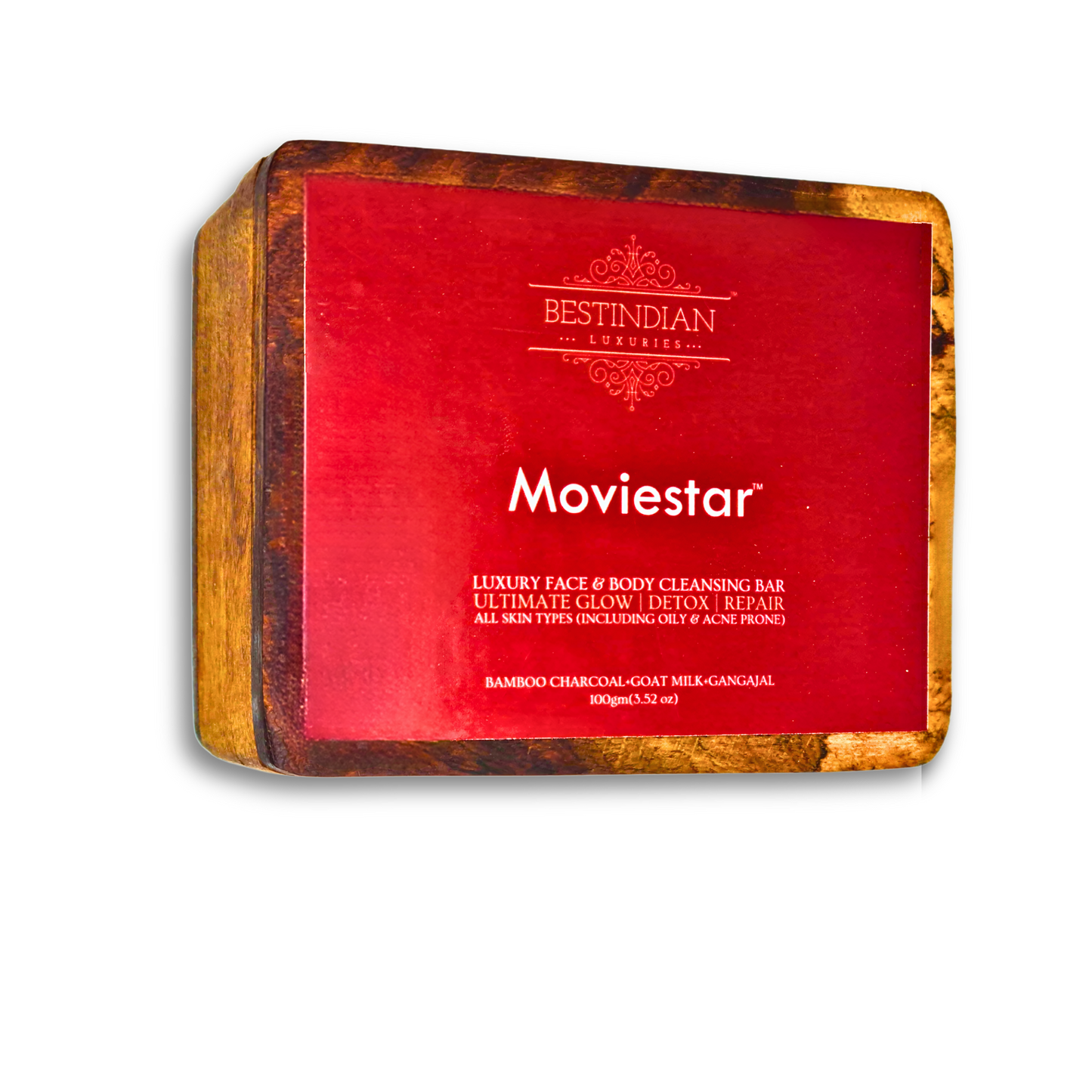
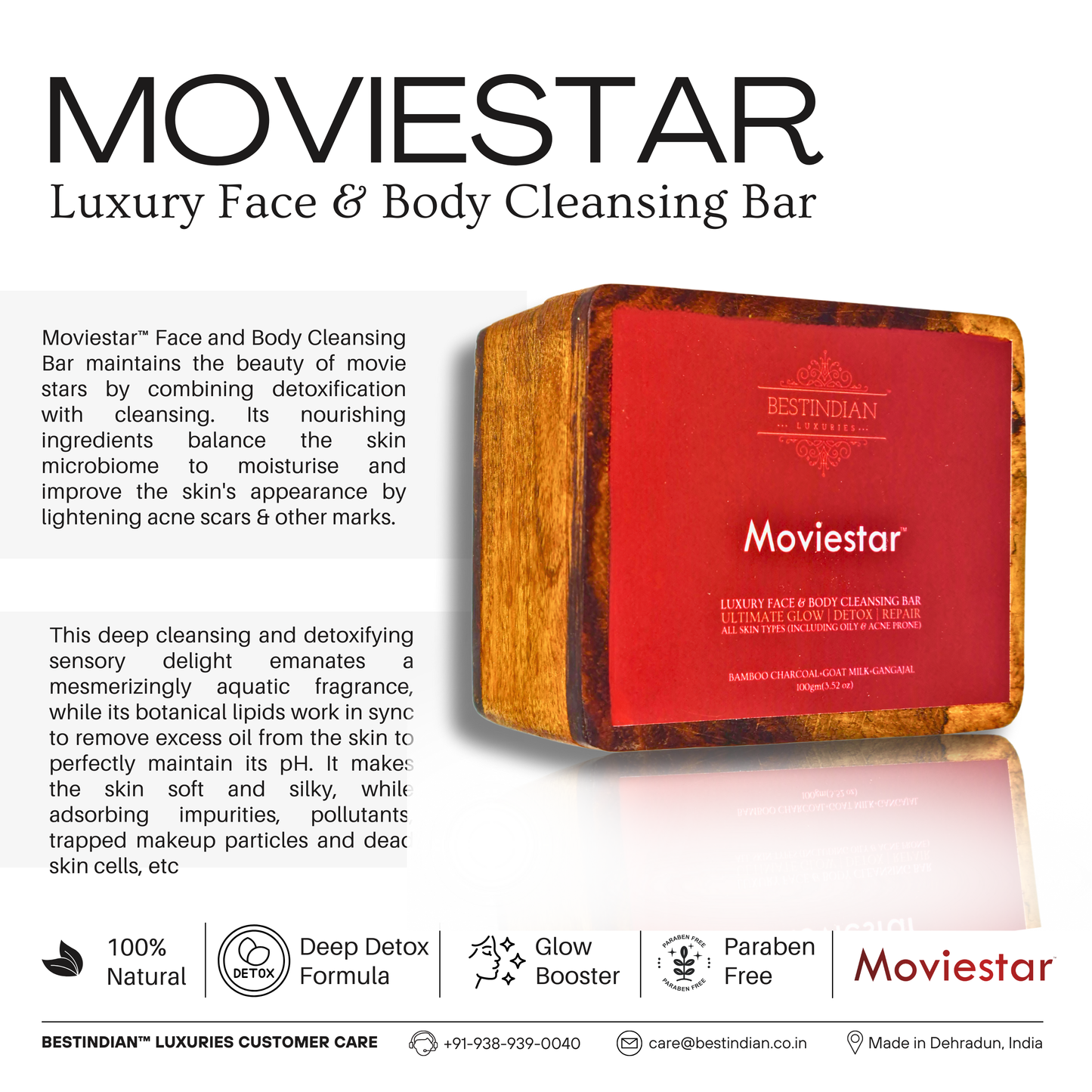

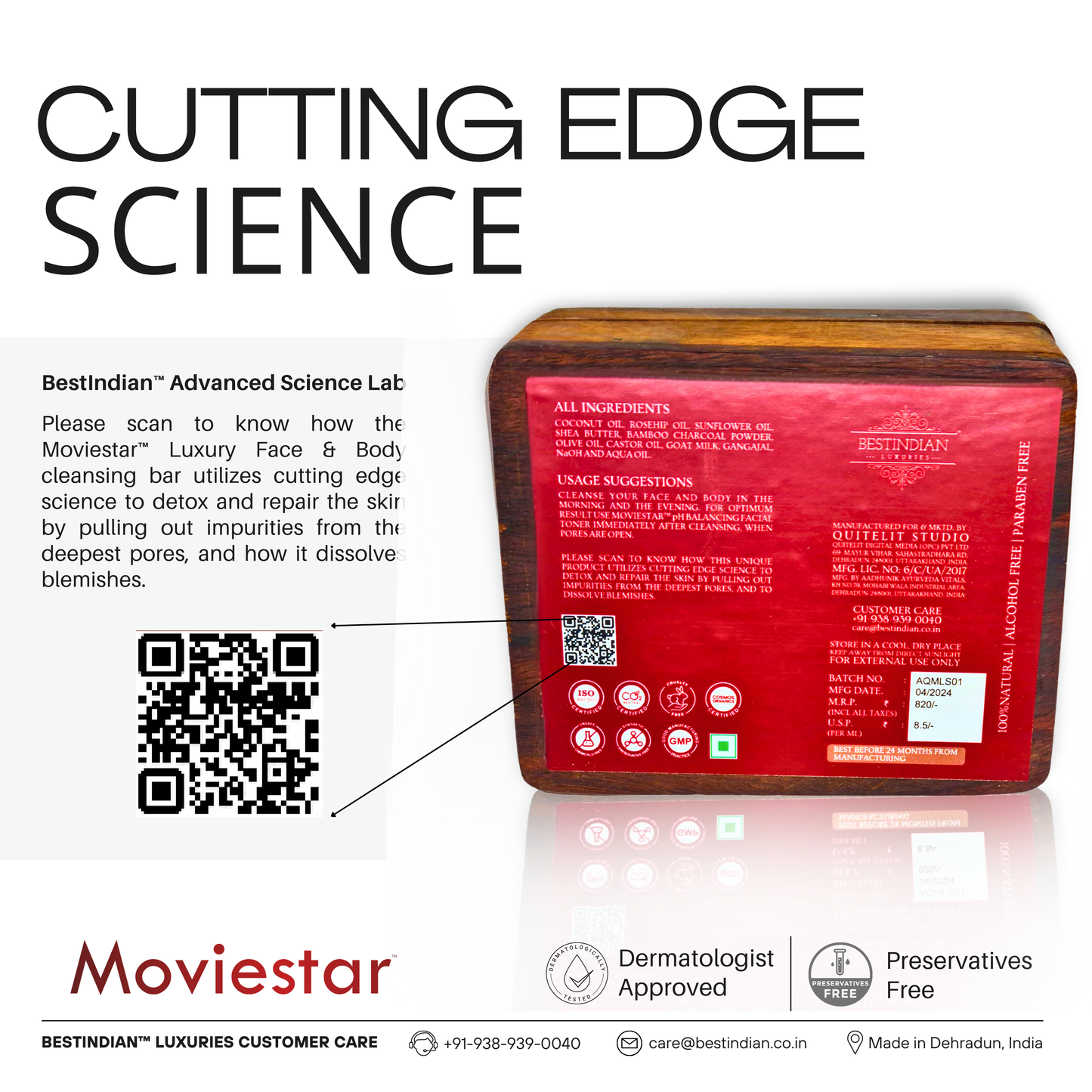
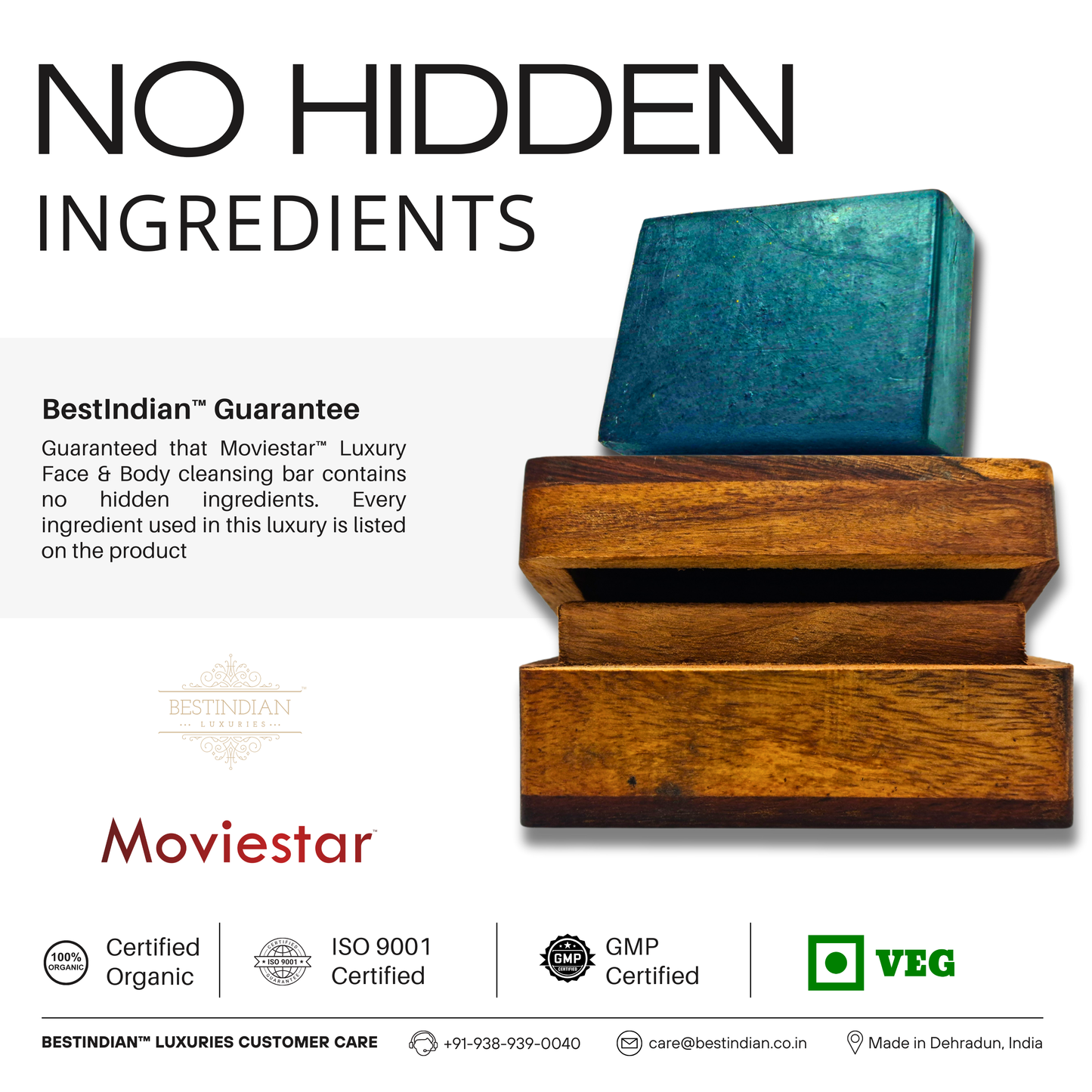
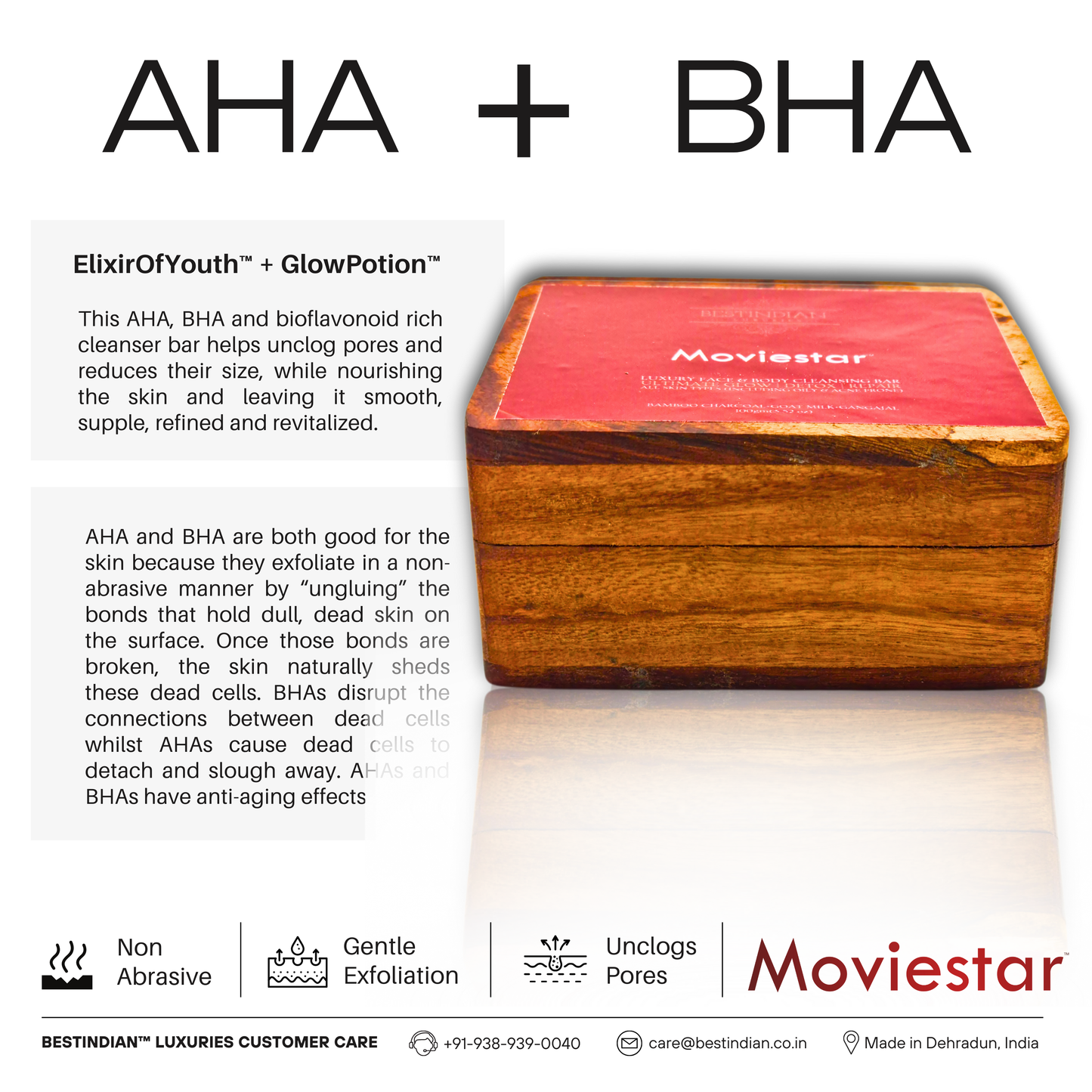
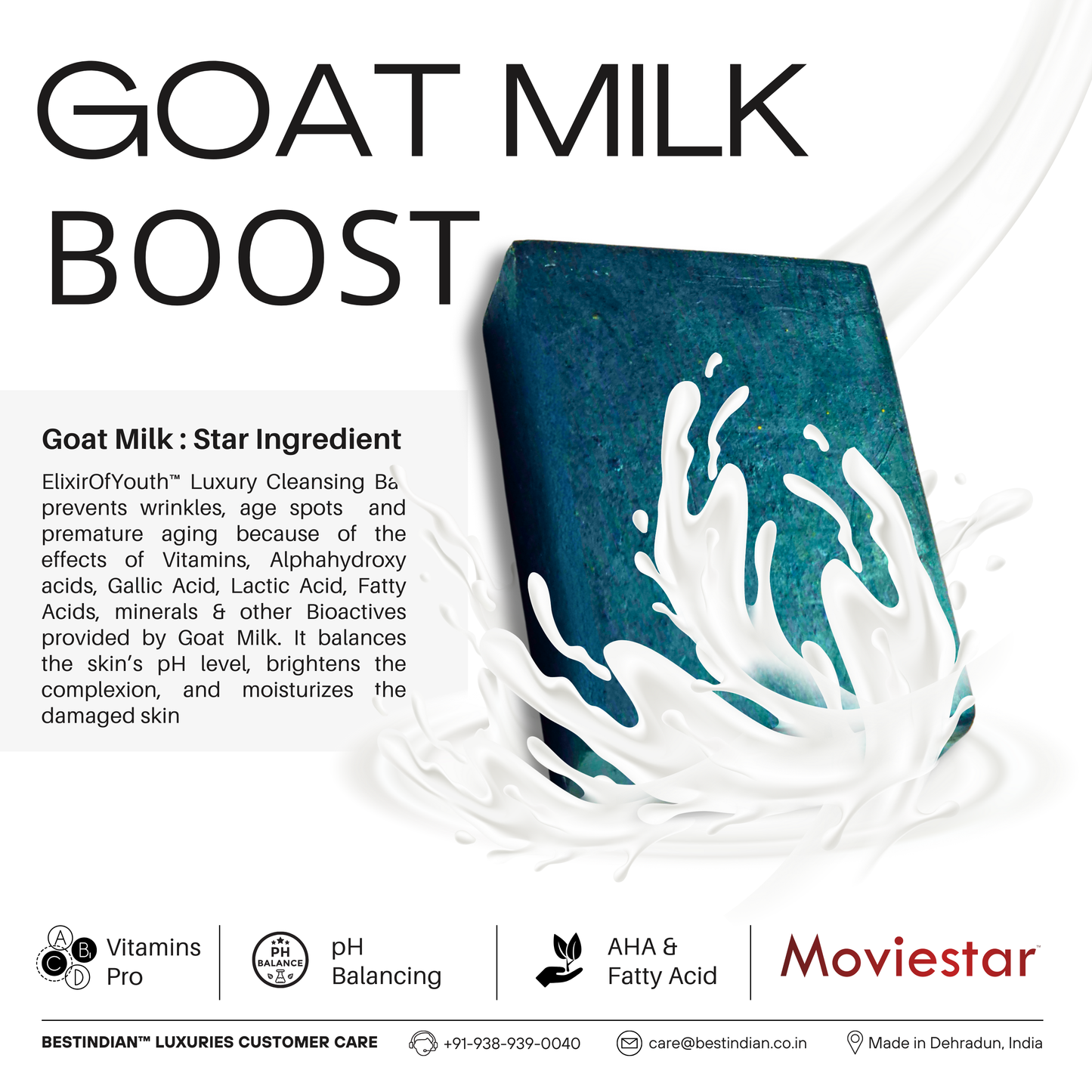


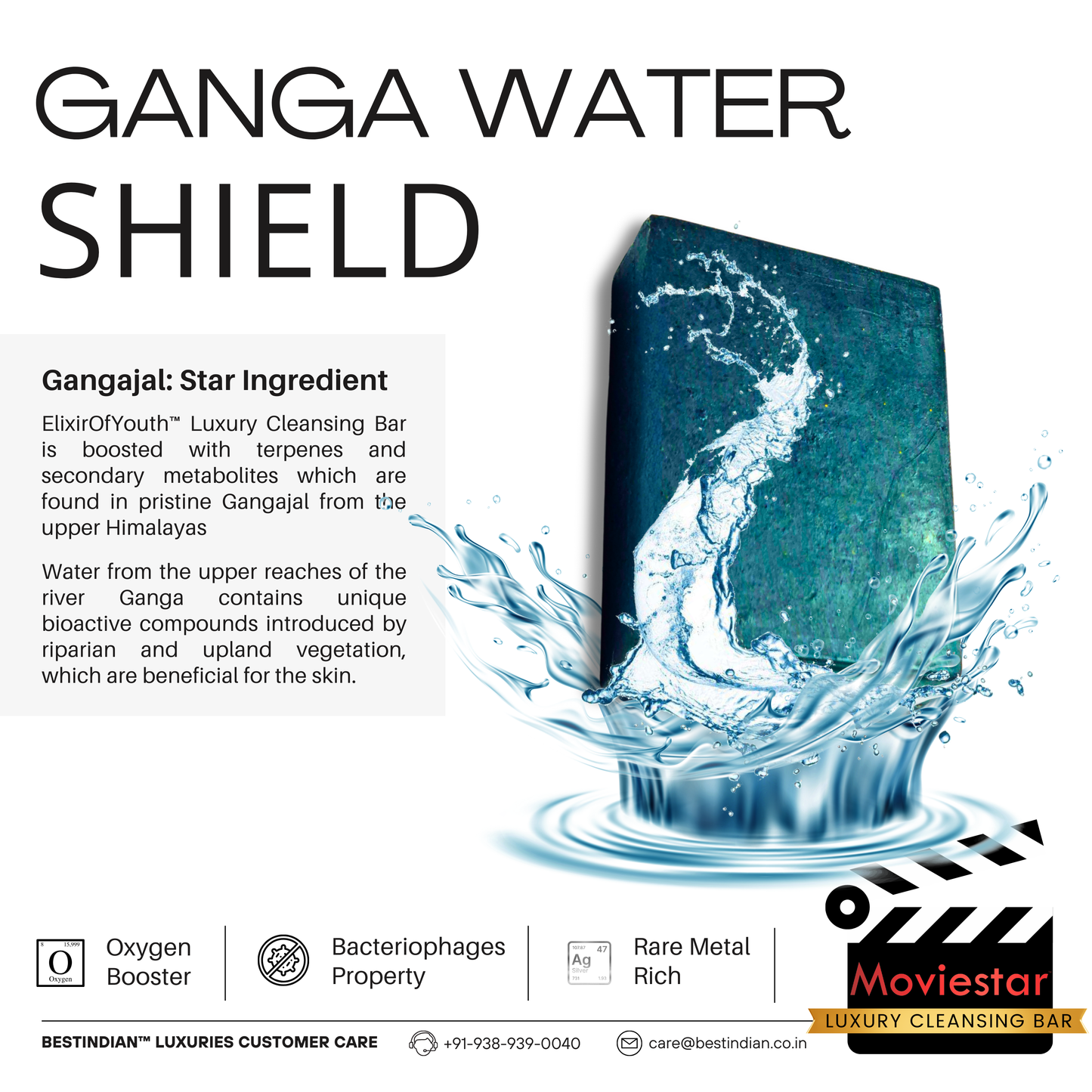
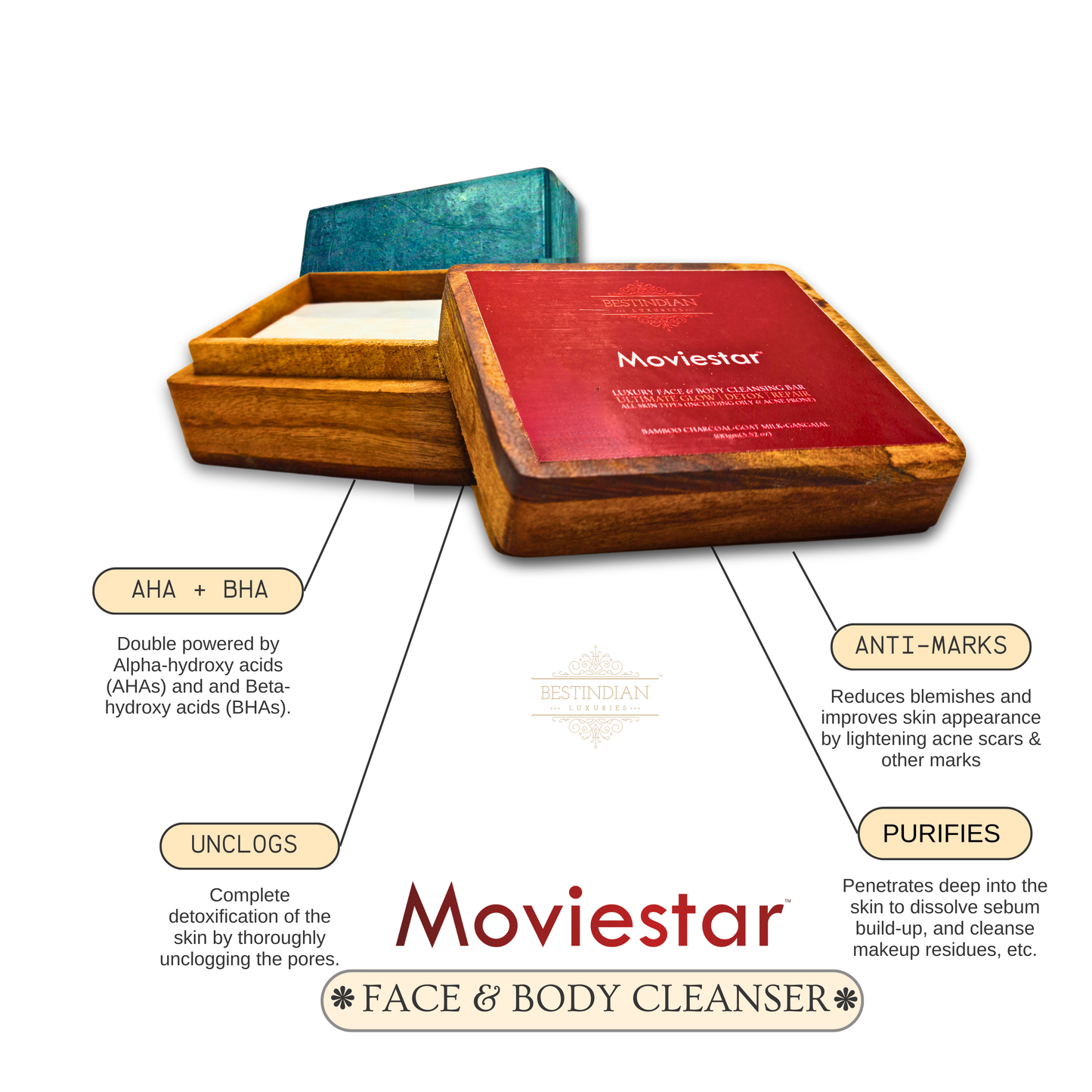

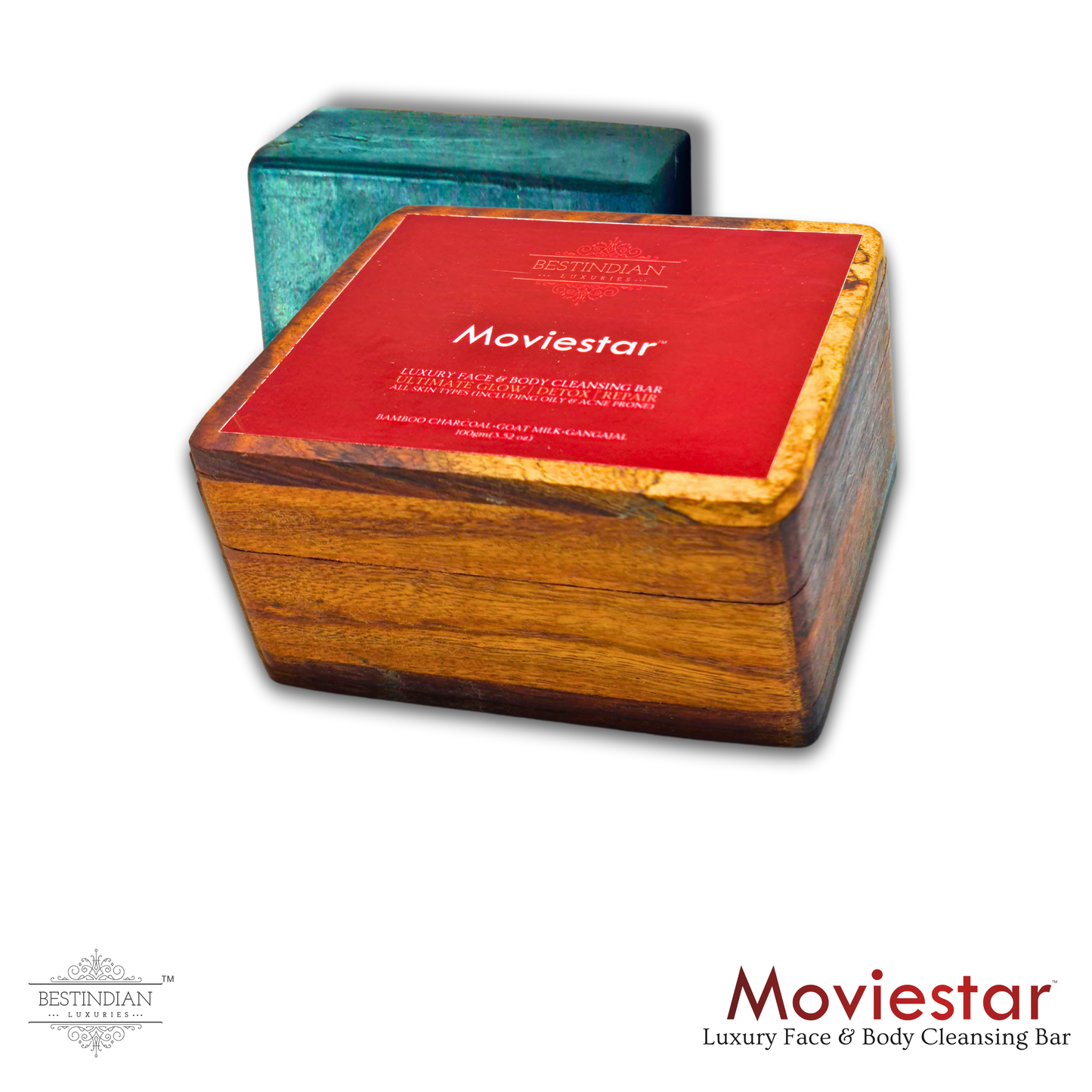

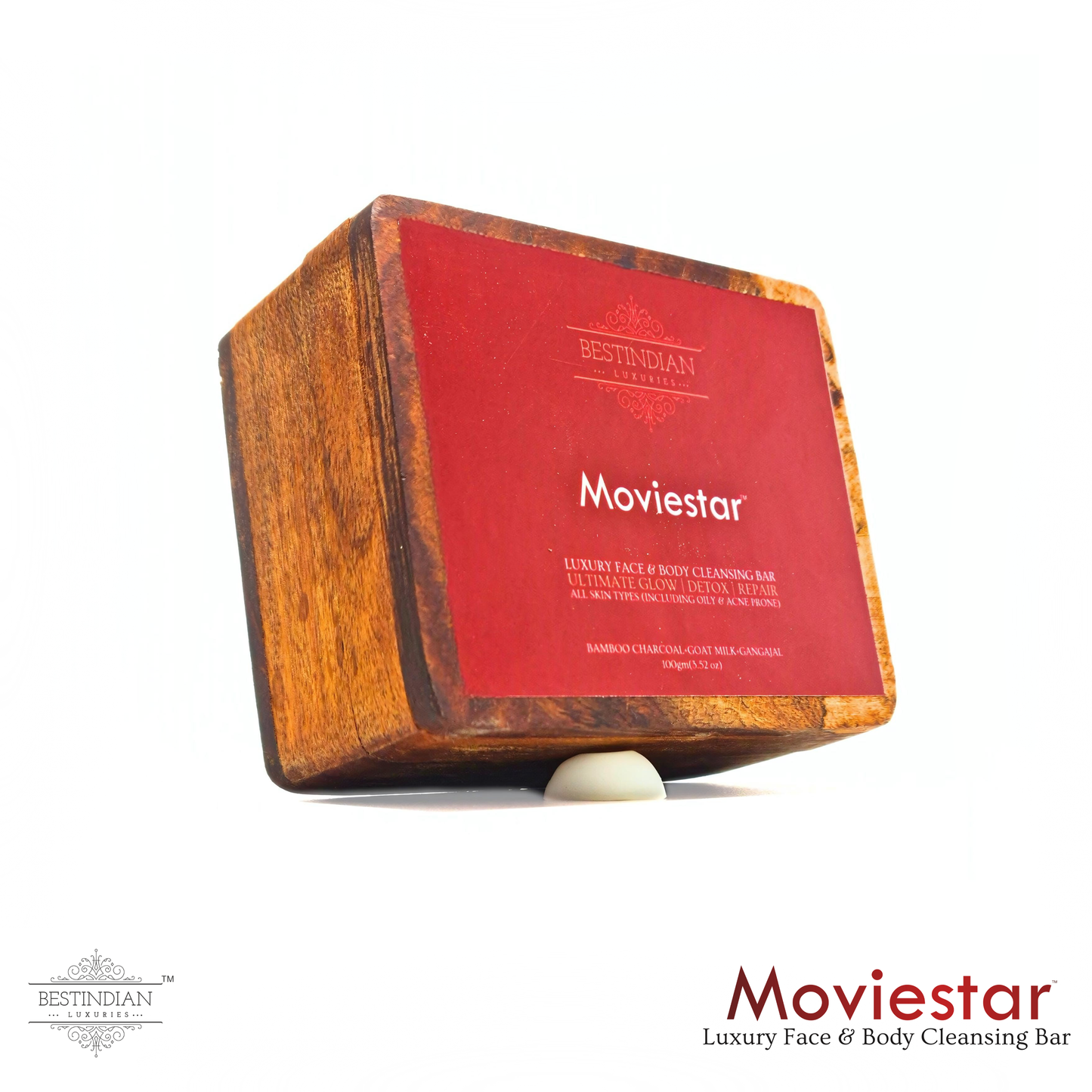
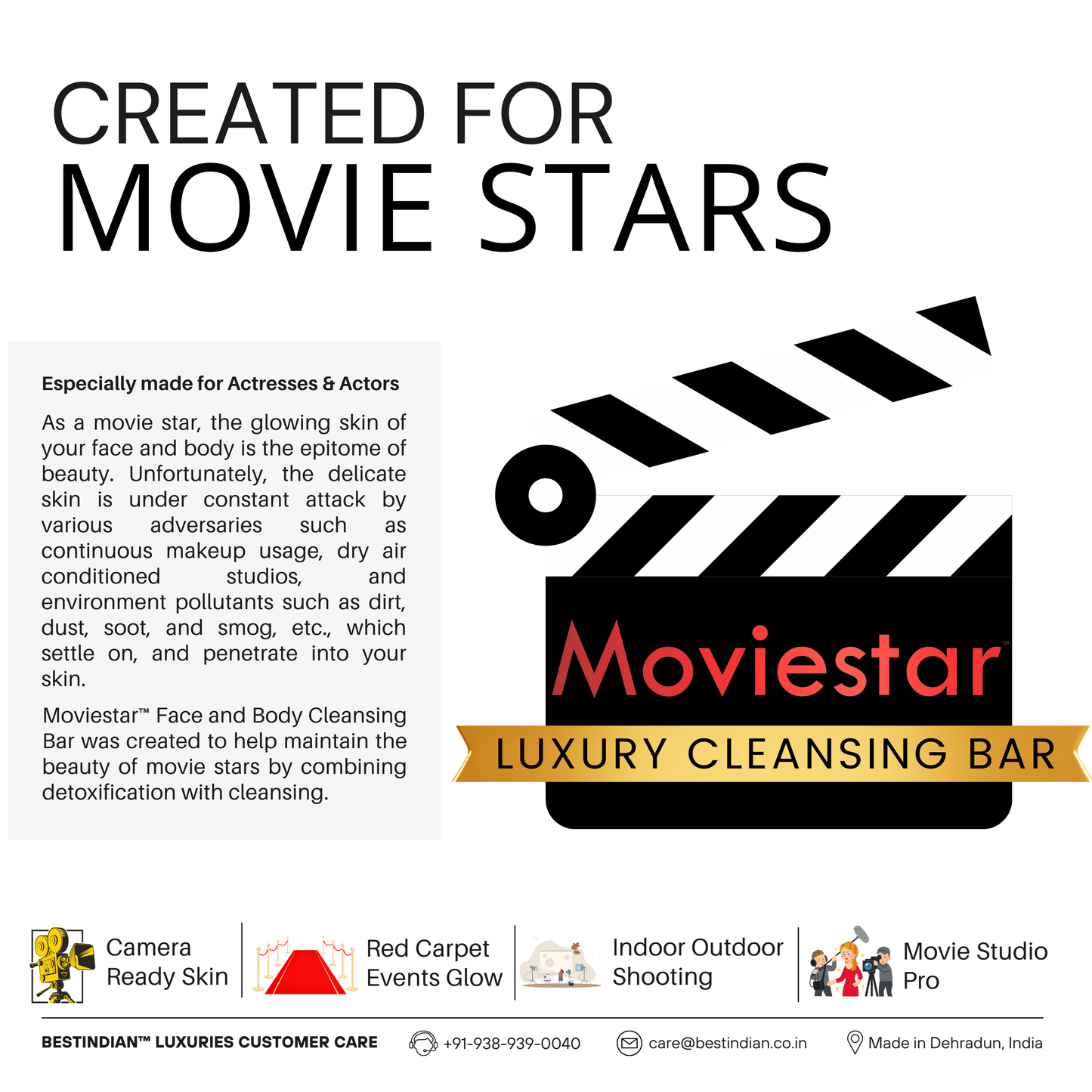
About BestIndian™: Where Heritage Meets Science-Led Natural Luxury
Born at the intersection of Ayurveda and performance, BestIndian™ crafts natural luxury skincare, hair care, and alcohol-free perfume elixirs rooted in Himalayan botanicals and refined by modern science. Each product reflects our commitment to purity, transparency, and responsible Indian craftsmanship.

Where Truth Meets Luxury Beauty in India
The crisp air of the Himalayas. The whisper of ancient Ayurveda. The assurance of modern science.
This is where BestIndian™ was born — a world where beauty is honest, luxury is ethical, and every jar and bottle tells a story of integrity. Our range spans performance skincare, restorative hair care, and exquisite alcohol-free perfume elixirs — all crafted to deliver results while honouring purity, sustainability, and Indian heritage.
A Journey of Resilience & Reinvention
The authenticity of BestIndian™ is rooted in the journey of its founder, Nitin Sahrawat. After a prolific fifteen-year career as an actor in Mumbai, he chose to leave a life of glamour for one of purpose. He embarked on a path of reinvention, returning to his education to become a registered lawyer and dedicating himself to animal welfare and environmentalism. This brand is the culmination of that journey—a business built not on profit, but on a promise to create a medium for positive change.

Our Roots: Ayurveda, Himalayan Purity & Science
Our journey begins in the Himalayan foothills of Dehradun, where partner farmers cultivate potent botanicals in mineral-rich, organic soil. We blend centuries-old Ayurvedic knowledge from classical texts with modern formulation science to create trademarked bioactive formulas.
From Ancient Texts to Modern Research
Our formulations draw on Ayurvedic classics such as the Charak Samhita and Sushrut Samhita, then undergo modern R&D to translate botanical efficacy into reproducible, high-performance products.
Manufacturing & Quality
All BestIndian™ products are produced in a single, transparent supply chain. Our manufacturing facility is GMP, ISO 9001:2015 & COSMOS Organic certified, carbon-neutral and cruelty-free. These certifications apply to our facility and processes; they ensure rigorous quality control, sustainability, and traceability at scale.

Our Uncompromising Purity & Transparency
We are obsessive about what goes into — and stays out of — our products. This is our non-negotiable guarantee to you.
- Pure Formulas: No parabens, no sulfates, no random synthetic fillers, no hidden toxins.
- Total Transparency: We disclose full ingredient lists so you can make informed choices.
- Ethical by Design: 100% vegetarian formulations and cruelty-free practices where applicable.
For detailed declarations of our promises — safety, ingredient transparency, and our carbon-neutral manufacturing — see Our Philosophy & Promises. For origin, heritage, and craft-focused storytelling, visit Natural & Organic Luxuries.
The Power in Every Bottle & Jar — Brands and Innovation
BestIndian™ is the umbrella for a portfolio of trademarked Indian luxury brands, each crafted with a specific purpose:
- Moviestar™ — Professional-grade skincare and hair care designed for actors and performers who demand camera-ready results without compromising skin health.
- Elixir of Youth™ — Anti-aging formulations marrying Ayurvedic botanicals with modern actives.
- GlowPotion™ — Lightweight formulations for a natural, luminous finish.
- Luxury of India™ — Celebrating India’s rare botanicals and artisanal traditions in high-performance formulations.
Each of these lines is trademarked and rooted in the same purity and manufacturing standards described above.
From Our Founder: A Promise of Authenticity
“As an actor for over fifteen years in Mumbai, I learned that the most powerful connection is built on authenticity. I created BestIndian™ because I wanted safe, honest performance-grade beauty that supports artists and everyday users alike.”
— Nitin Sahrawat, Founder, BestIndian™

Our Growth Ethos — 100% Organic Reach, Zero Paid Ads
We believe a product should speak for itself. That’s why we do not rely on paid ads or celebrity endorsements. Our growth is driven by product efficacy, education, and word of mouth.
- No Paid Ads — We invest in product quality and social purpose instead.
- Education Over Persuasion — Transparent content that helps customers choose wisely.
- Community-Led Growth — Rooted in genuine recommendations and social impact.

Beyond Beauty — Social & Environmental Commitment
BestIndian™ diverts a meaningful portion of revenue towards social and environmental causes. Our initiatives include animal rescue & rehabilitation, urban-forest creation (Atal Vatika, Dehradun), and youth empowerment programs in creative industries.
Find full details on our commitments at Our Philosophy & Promises and learn about Atal Vatika at Atal Vatika .
Join the Movement
When you choose BestIndian™, you choose purity over pretense, science with heritage, and luxury that serves a greater purpose. Welcome to BestIndian™.
Star Ingredients
-

Bamboo Charcoal
It is a natural detoxifier that draws out bacteria, dirt, impurities, pollutants and excess sebum from clogged pores. Because of its larger surface area, it can adsorb harmful particles on the skin to clear up acne, cold sores, or hives. It rejuvenates the skin and restores its appearance as it exfoliates dead skin cells. It has anti-fungal, anti-microbial, anti-bacterial, and anti-viral properties.
-

Goat Milk
Alpha hydroxy acid (AHA) including lactic & caprylic acid in goat's milk cleanse the skin perfectly, to exfoliate dead skin by breaking down the bonds between dead cells, and allowing younger, fresher skin beneath to resurface. People with skin disorders such psoriasis, eczema, dryness, etc, attributed raw goat milk soap to relieving inflammation, skin peeling, and itching
-

Gangajal
Ganga water contains metals such as silver and copper that are natural disinfectants against a broad range of bacteria. Phytochemicals in the water has been linked to reductions in major chronic diseases.It holds good potential for upper- and lower respiratory tract infections. Gangajal can provide us with an effective, natural, and cost-effective alternative form of therapy.






































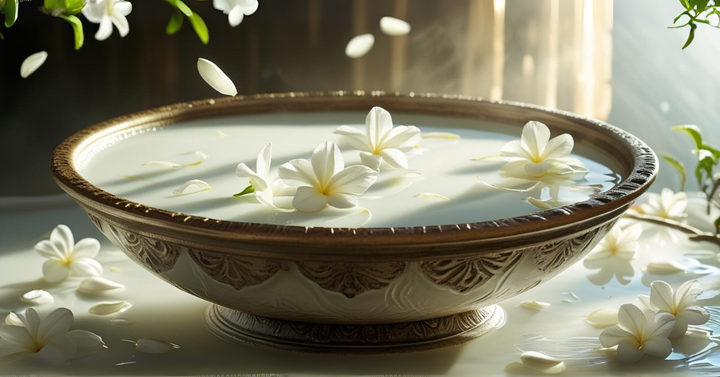
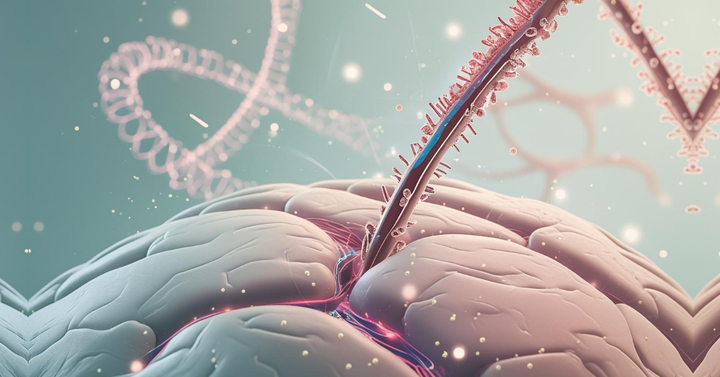
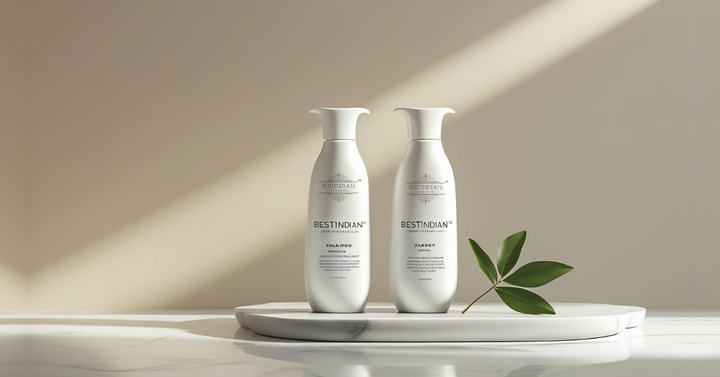
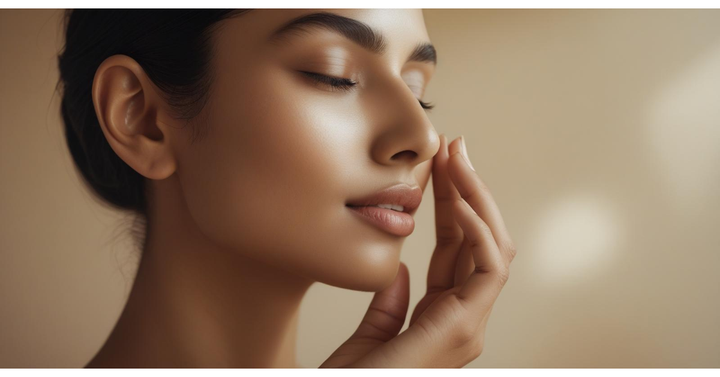
Customer Reviews